#frederick charles gordon
Explore tagged Tumblr posts
Text

Frederick Charles Gordon (1856-1924), ''The Echo-Maid'' by Alicia Aspinwall, 1897 "Listen and Tremble! I Am the King of the Serpents!!" Source
#Frederick Charles Gordon#canadian artists#Alicia Aspinwall#children's books#vintage illustration#vintage art
77 notes
·
View notes
Text


Band of Brothers Birthdays
January
1 John S. Zielinski Jr. (b. 1925)
21 Richard D. “Dick” Winters (b. 1918)
26 Herbert M. Sobel (b. 1912)
30 Clifford Carwood "Lip" Lipton (b. 1920)
31 Warren H. “Skip” Muck (b. 1922) & Robert B. Brewer (b. 1924)
February
8 Clarence R. Hester (b. 1916)
18 Thomas A. Peacock (b. 1920)
23 Lester A. “Les” Hashey (b. 1925)
March
1 Charles E. “Chuck” Grant (b. 1922)
2 Colonel Robert L. “Bob” Strayer (b. 1910)
4 Wayne “Skinny” Sisk (b. 1922)
10 Frank J. Perconte (b. 1917)
13 Darrell C. “Shifty” Powers (b. 1923)
14 Joseph J. “Joe” Toye (b. 1919)
24 John D. “Cowboy” Halls (b. 1922)
26 George Lavenson (b. 1917) & George H. Smith Jr. (1922)
27 Gerald J. Loraine (b. 1913)
April
3 Colonel Robert F. “Bob” Sink (b. 1905) & Patrick S. “Patty” O’Keefe (b. 1926)
5 John T. “Johnny” Julian (b. 1924)
10 Renée B. E. Lemaire (b. 1914)
11 James W. Miller (b. 1924)
15 Walter S. “Smokey” Gordon Jr. (b. 1920)
20 Ronald C. “Sparky” Speirs (b. 1920)
23 Alton M. More (b. 1920)
27 Earl E. “One Lung” McClung (b. 1923) & Henry S. “Hank” Jones Jr. (b. 1924)
28 William J. “Wild Bill” Guarnere (b. 1923)
May
12 John W. “Johnny” Martin (b. 1922)
16 Edward J. “Babe” Heffron (b. 1923)
17 Joseph D. “Joe” Liebgott (b. 1915)
19 Norman S. Dike Jr. (b. 1918) & Cleveland O. Petty (b. 1924)
25 Albert L. "Al" Mampre (b. 1922)
June
2 David K. "Web" Webster (b. 1922)
6 Augusta M. Chiwy ("Anna") (b. 1921)
13 Edward D. Shames (b. 1922)
17 George Luz (b. 1921)
18 Roy W. Cobb (b. 1914)
23 Frederick T. “Moose” Heyliger (b. 1916)
25 Albert Blithe (b. 1923)
28 Donald B. "Hoob" Hoobler (b. 1922)
July
2 Gen. Anthony C. "Nuts" McAuliffe (b. 1898)
7 Francis J. “Frank” Mellet (b. 1920)
8 Thomas Meehan III (b. 1921)
9 John A. Janovec (b. 1925)
10 Robert E. “Popeye” Wynn (b. 1921)
16 William S. Evans (b. 1910)
20 James H. “Moe” Alley Jr. (b. 1922)
23 Burton P. “Pat” Christenson (b. 1922)
29 Eugene E. Jackson (b. 1922)
31 Donald G. "Don" Malarkey (b. 1921)
August
3 Edward J. “Ed” Tipper (b. 1921)
10 Allen E. Vest (b. 1924)
15 Kenneth J. Webb (b. 1920)
18 Jack E. Foley (b. 1922)
26 Floyd M. “Tab” Talbert (b. 1923) & General Maxwell D. Taylor (b. 1901)
29 Joseph A. Lesniewski (b. 1920)
31 Alex M. Penkala Jr. (b. 1924)
September
3 William H. Dukeman Jr. (b. 1921)
11 Harold D. Webb (b. 1925)
12 Major Oliver M. Horton (b. 1912)
27 Harry F. Welsh (b. 1918)
30 Lewis “Nix” Nixon III (b. 1918)
October
5 Joseph “Joe” Ramirez (b. 1921) & Ralph F. “Doc” Spina (b. 1919) & Terrence C. "Salty" Harris (b. 1920)
6 Leo D. Boyle (b. 1913)
10 William F. “Bill” Kiehn (b. 1921)
15 Antonio C. “Tony” Garcia (b. 1924)
17 Eugene G. "Doc" Roe (b. 1922)
21 Lt. Cl. David T. Dobie (b. 1912)
28 Herbert J. Suerth Jr. (b. 1924)
31 Robert "Bob" van Klinken (b. 1919)
November
11 Myron N. “Mike” Ranney (b. 1922)
20 Denver “Bull” Randleman (b. 1920)
December
12 John “Jack” McGrath (b. 1919)
31 Lynn D. “Buck” Compton (b. 1921)
Unknown Date
Joseph P. Domingus
Richard J. Hughes (b. 1925)
Maj. Louis Kent
Father John Mahoney
George C. Rice
SOURCES
Military History Fandom Wiki
Band of Brothers Fandom Wiki
Traces of War
Find a Grave
#this is going off who was on on the show#i double checked the dates and such but if you notice any mistakes please let me know :)#band of brothers#easy company#hbo war#not gonna tag everyone lol#mine: misc#yep it's actually Halls and not Hall#i've seen Terrence Harris's name spelled with as Terence but wenand t with two Rs s#since that's how it's spelled on photos of memorials and on his gravestone#I’ll do the pacific next! should be significantly shorter since there’s far fewer characters 😅
183 notes
·
View notes
Text














BOBSTROLOGY
A completely serious presentation by @pegasusdrawnchariots and oatflatwhite
written version under the cut!
♈️Patrick O’Keefe [April 3 1926] ♈️Robert Sink [April 3 1905] ♈️John Julian [5 April 1924] ♈️Renée Lemaire [10 April 1914] ♈️James Miller [11 April 1924] ♈️Walter “Smokey” Gordon [April 15 1920] ♉️~Ronald Speirs [April 20 1920] ♉️Alton More [April 22 1920] ♉️Henry Jones [27 April 1924] ♉️Edward “Babe” Heffron [May 16 1923] ♉️John Martin [May 12 1922] ♉️Joseph Liebgott [May 17 1915] ♉️Norman Dike [May 19 1918] ♉️William Guarnere [April 28 1923] ♊️David Webster [June 2 1922] ♊️George Luz [June 17 1921] ♊️Roy Cobb [June 18 1914] ♋️Frederick “Moose” Heyliger [June 23 1916] ♋️Albert Blithe [June 25 1923] ♋️Donald Hoobler [28 June 1922] ♋️Thomas Meehan [8 July 1921] ♋️John Janovec [9 July 1925] ♋️Robert “Popeye” Wynn [July 10 1921] ♋️James "Moe" Alley [July 20 1922] ♌️~Burton “Pat” Christenson [July 23 1922] ♌️Eugene Jackson [29 July 1922] ♌️Donald Malarkey [July 31 1921] ♌️Edward Tipper [3 August 1921] ♍️Floyd Talbert [August 26 1923] ♍️Alex Penkala [August 30 1922] ♍️William Dukeman [3 September 1921] ♎️Eugene Roe [October 17 1922] ♎️Harry Welsh [September 27 1918] ♎️Lewis Nixon [September 30 1918] ♎️Ralph Spina [October 5 1919] ♎️Thomas Peacock [October 9 1923] ♏️Denver “Bull” Randleman [November 20 1920] ♑️Lynn “Buck” Compton [December 31 1921] ♑️Antonio Garcia [January 17 1925] ♒️Richard "Dick" Winters [January 21 1918] ♒️Herbert Sobel [January 26 1912] ♒️Carwood Lipton [January 30 1920] ♒️Warren “Skip” Muck [January 31 1922] ♓️Lester Hashey [23 February 1925] ♓️Charles “Chuck” Grant [1 March 1922] ♓️Robert Strayer [March 2 1912] ♓️Wayne “Skinny” Sisk [March 4 1922] ♓️Frank Perconte [March 10 1917] ♓️Darrell “Shifty” Powers [March 13 1923] ♓️Joseph Toye [March 14 1919]
6 Aries 🥉 8 Taurus 🥇 3 Gemini 7 Cancer 🥈 4 Leo 3 Virgo 5 Libra 1 Scorpio 0 Sagittarius 🥄 2 Capricorn 4 Aquarius 7 Pisces 🥈
10 🔥 13 🪨 12 💨 15 💧
20 cardinal 17 fixed 13 mutable
22 masculine 28 feminine
#band of brothers#hbo war#bobedit#hbowaredit#bobstrology#astrology#liz makes things#disclaimer: our interpretation is ironclad. we alone decide the law. argue w the wall.#< we say as an aries and scorpio with renee and bull in our corners <3
217 notes
·
View notes
Text
(Mostly) Lost, but Not Forgotten: Omar Khayyam (1923) / A Lover’s Oath (1925)




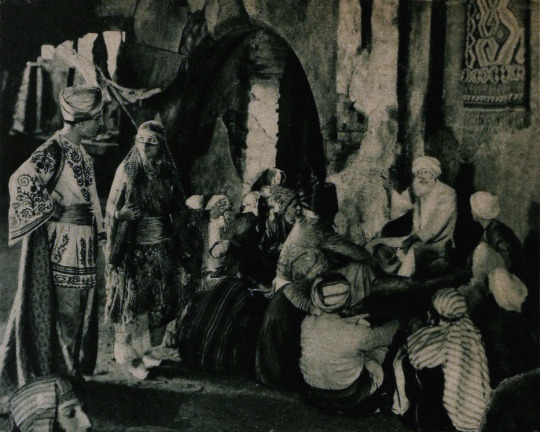


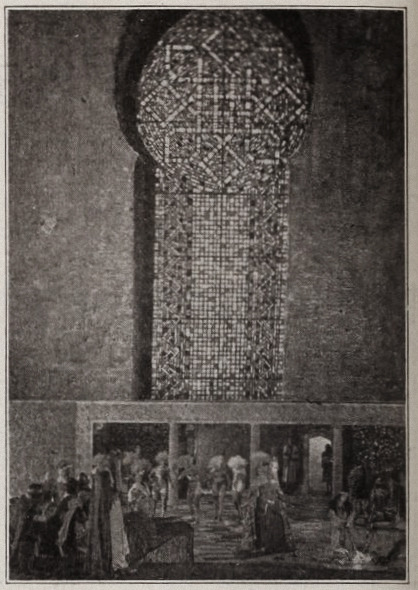
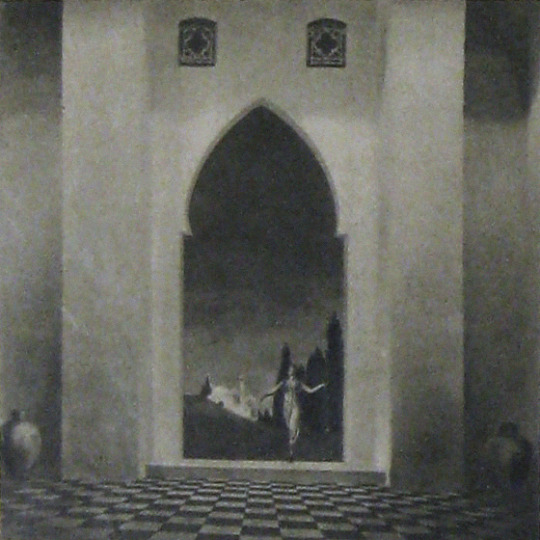
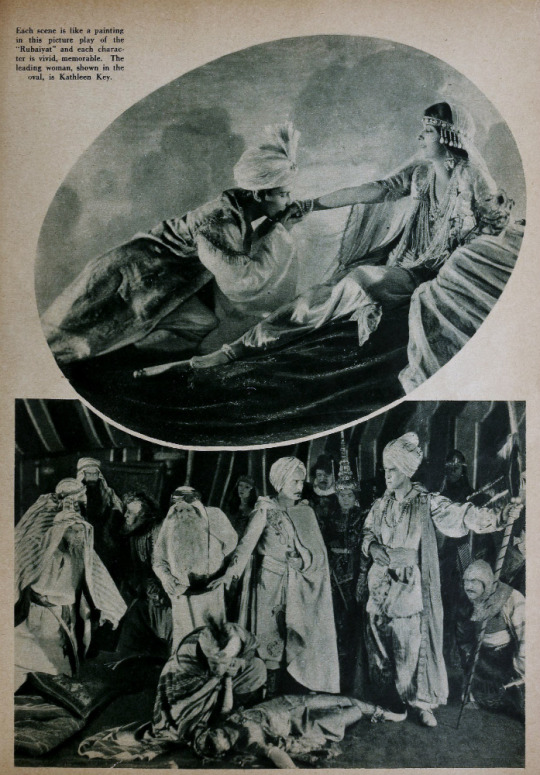
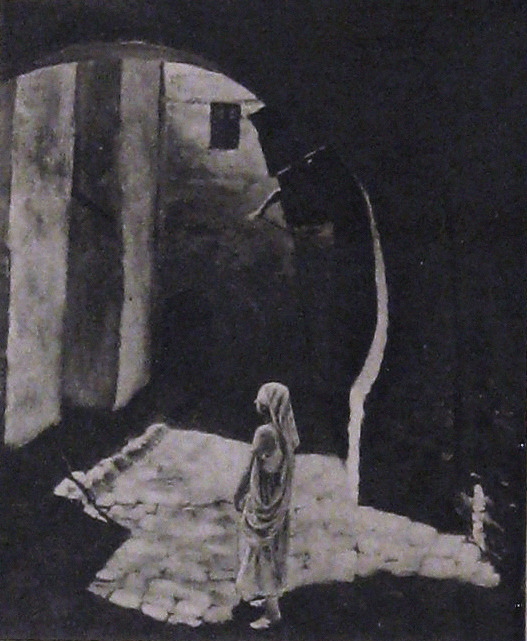

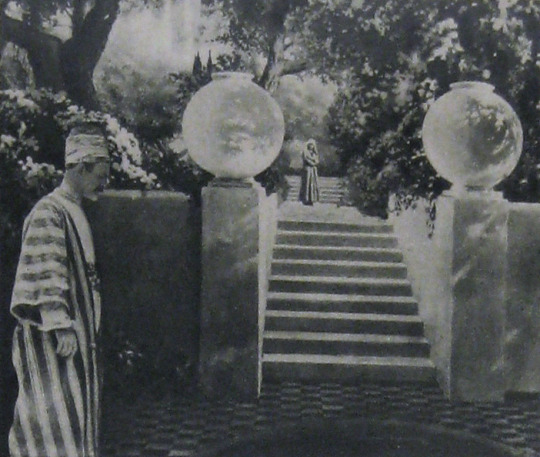
Alternate Titles: The Rubaiyat of Omar Khayyam, The Rubaiyat, Omar Khayyam, Omar
Direction: Ferdinand Pinney Earle; assisted by Walter Mayo
Scenario: Ferdinand P. Earle
Titles: Marion Ainslee, Ferdinand P. Earle (Omar), Louis Weadock (A Lover’s Oath)
Inspired by: The Rubaiyat of Omar Khayyam, as edited & translated by Edward FitzGerald
Production Manager: Winthrop Kelly
Camera: Georges Benoit
Still Photography: Edward S. Curtis
Special Photographic Effects: Ferdinand P. Earle, Gordon Bishop Pollock
Composer: Charles Wakefield Cadman
Editors: Arthur D. Ripley (The Rubaiyat of Omar Khayyam version), Ethel Davey & Ferdinand P. Earle (Omar / Omar Khayyam, the Director’s cut of 1922), Milton Sills (A Lover’s Oath)
Scenic Artists: Frank E. Berier, Xavier Muchado, Anthony Vecchio, Paul Detlefsen, Flora Smith, Jean Little Cyr, Robert Sterner, Ralph Willis
Character Designer: Louis Hels
Choreography: Ramon Novarro (credited as Ramon Samaniegos)
Technical Advisors: Prince Raphael Emmanuel, Reverend Allan Moore, Captain Dudley S. Corlette, & Captain Montlock or Mortlock
Studio: Ferdinand P. Earle Productions / The Rubaiyat, Inc. (Production) & Eastern Film Corporation (Distribution, Omar), Astor Distribution Corporation [States Rights market] (Distribution, A Lover’s Oath)
Performers: Frederick Warde, Edwin Stevens, Hedwiga Reicher, Mariska Aldrich, Paul Weigel, Robert Anderson, Arthur Carewe, Jesse Weldon, Snitz Edwards, Warren Rogers, Ramon Novarro (originally credited as Ramon Samaniegos), Big Jim Marcus, Kathleen Key, Charles A. Post, Phillippe de Lacy, Ferdinand Pinney Earle
Premiere(s): Omar cut: April 1922 The Ambassador Theatre, New York, NY (Preview Screening), 12 October 1923, Loew’s New York, New York, NY (Preview Screening), 2 February 1923, Hoyt’s Theatre, Sydney, Australia (Initial Release)
Status: Presumed lost, save for one 30 second fragment preserved by the Academy Film Archive, and a 2.5 minute fragment preserved by a private collector (Old Films & Stuff)
Length: Omar Khayyam: 8 reels , 76 minutes; A Lover’s Oath: 6 reels, 5,845 feet (though once listed with a runtime of 76 minutes, which doesn’t line up with the stated length of this cut)
Synopsis (synthesized from magazine summaries of the plot):
Omar Khayyam:
Set in 12th century Persia, the story begins with a preface in the youth of Omar Khayyam (Warde). Omar and his friends, Nizam (Weigel) and Hassan (Stevens), make a pact that whichever one of them becomes a success in life first will help out the others. In adulthood, Nizam has become a potentate and has given Omar a position so that he may continue his studies in mathematics and astronomy. Hassan, however, has grown into quite the villain. When he is expelled from the kingdom, he plots to kidnap Shireen (Key), the sheik’s daughter. Shireen is in love with Ali (Novarro). In the end it’s Hassan’s wife (Reicher) who slays the villain then kills herself.
A Lover’s Oath:
The daughter of a sheik, Shireen (Key), is in love with Ali (Novarro), the son of the ruler of a neighboring kingdom. Hassan covets Shireen and plots to kidnap her. Hassan is foiled by his wife. [The Sills’ edit places Ali and Shireen as protagonists, but there was little to no re-shooting done (absolutely none with Key or Novarro). So, most critics note how odd it is that all Ali does in the film is pitch woo, and does not save Shireen himself. This obviously wouldn’t have been an issue in the earlier cut, where Ali is a supporting character, often not even named in summaries and news items. Additional note: Post’s credit changes from “Vizier” to “Commander of the Faithful”]
Additional sequence(s) featured in the film (but I’m not sure where they fit in the continuity):
Celestial sequences featuring stars and planets moving through the cosmos
Angels spinning in a cyclone up to the heavens
A Potters’ shop sequence (relevant to a specific section of the poems)
Harem dance sequence choreographed by Novarro
Locations: palace gardens, street and marketplace scenes, ancient ruins
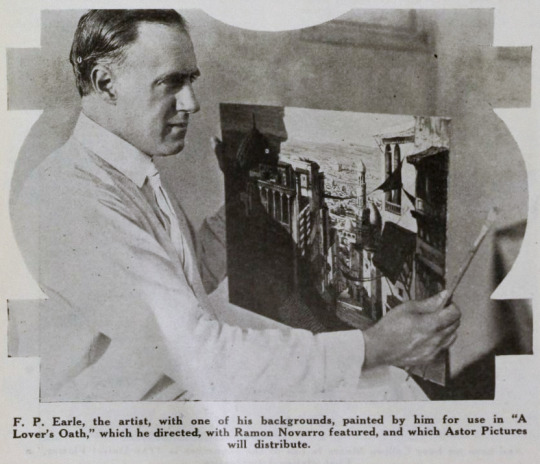
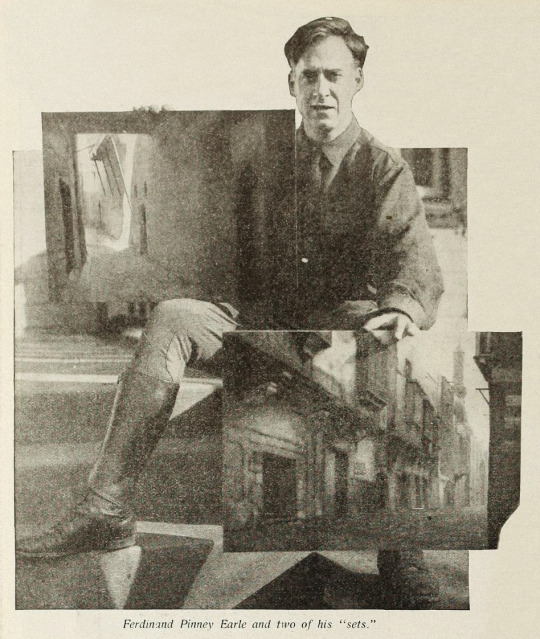
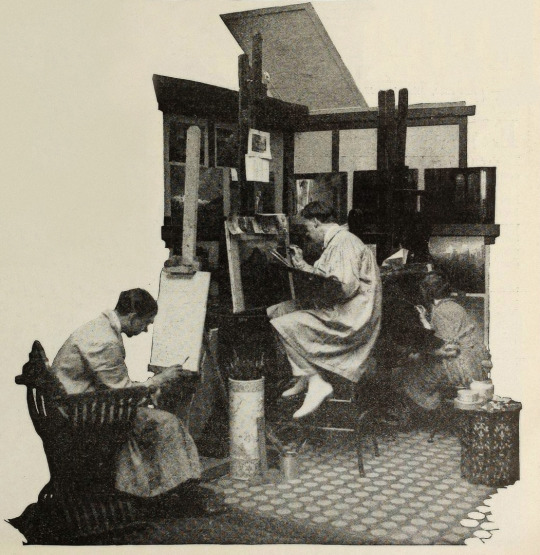


Points of Interest:
“The screen has been described as the last word in realism, but why confine it there? It can also be the last word in imaginative expression.”
Ferdinand P. Earle as quoted in Exhibitors Trade Review, 4 March 1922
The Rubaiyat of Omar Khayyam was a massive best seller. Ferdinand Pinney Earle was a classically trained artist who studied under William-Adolphe Bougueraeu and James McNeill Whistler in his youth. He also had years of experience creating art backgrounds, matte paintings, and art titles for films. Charles Wakefield Cadman was an accomplished composer of songs, operas, and operettas. Georges Benoit and Gordon Pollock were experienced photographic technicians. Edward S. Curtis was a widely renowned still photographer. Ramon Novarro was a name nobody knew yet—but they would soon enough.
When Earle chose The Rubaiyat as the source material for his directorial debut and collected such skilled collaborators, it seemed likely that the resulting film would be a landmark in the art of American cinema. Quite a few people who saw Earle’s Rubaiyat truly thought it would be:
William E. Wing writing for Camera, 9 September 1922, wrote:
“Mr. Earle…came from the world of brush and canvass, to spread his art upon the greater screen. He created a new Rubaiyat with such spiritual colors, that they swayed.” … “It has been my fortune to see some of the most wonderful sets that this Old Earth possesses, but I may truly say that none seized me more suddenly, or broke with greater, sudden inspiration upon the view and the brain, than some of Ferdinand Earle’s backgrounds, in his Rubaiyat. “His vision and inspired art seem to promise something bigger and better for the future screen.”
As quoted in an ad in Film Year Book, 1923:
“Ferdinand Earle has set a new standard of production to live up to.”
Rex Ingram
“Fifty years ahead of the time.”
Marshall Neilan
The film was also listed among Fritz Lang’s Siegfried, Chaplin’s Gold Rush, Fairbanks’ Don Q, Lon Chaney’s Phantom of the Opera and The Unholy Three, and Erich Von Stroheim’s Merry Widow by the National Board of Review as an exceptional film of 1925.
So why don’t we all know about this film? (Spoiler: it’s not just because it’s lost!)
The short answer is that multiple dubious legal challenges arose that prevented Omar’s general release in the US. The long answer follows BELOW THE JUMP!
Earle began the project in earnest in 1919. Committing The Rubaiyat to film was an ambitious undertaking for a first-time director and Earle was striking out at a time when the American film industry was developing an inferiority complex about the level of artistry in their creative output. Earle was one of a number of artists in the film colony who were going independent of the emergent studio system for greater protections of their creative freedoms.
In their adaptation of The Rubaiyat of Omar Khayyam, Earle and Co. hoped to develop new and perfect existing techniques for incorporating live-action performers with paintings and expand the idea of what could be accomplished with photographic effects in filmmaking. The Rubaiyat was an inspired choice. It’s not a narrative, but a collection of poetry. This gave Earle the opportunity to intersperse fantastical, poetic sequences throughout a story set in the lifetime of Omar Khayyam, the credited writer of the poems. In addition to the fantastic, Earle’s team would recreate 12th century Persia for the screen.
Earle was convinced that if his methods were perfected, it wouldn’t matter when or where a scene was set, it would not just be possible but practical to put on film. For The Rubaiyat, the majority of shooting was done against black velvet and various matte photography and multiple exposure techniques were employed to bring a setting 800+ years in the past and 1000s of miles removed to life before a camera in a cottage in Los Angeles.
Note: If you’d like to learn a bit more about how these effects were executed at the time, see the first installment of How’d They Do That.
Unfortunately, the few surviving minutes don’t feature much of this special photography, but what does survive looks exquisite:
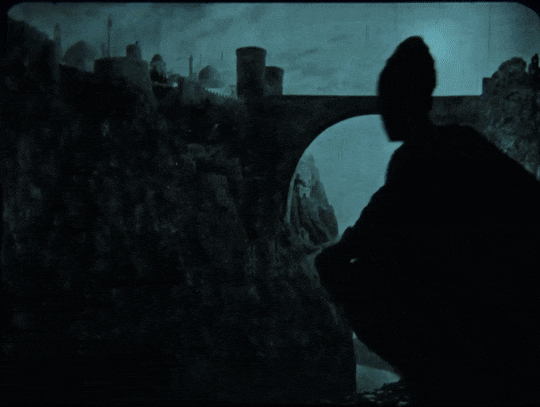
see all gifs here
Earle, knowing that traditional stills could not be taken while filming, brought in Edward S. Curtis. Curtis developed techniques in still photography to replicate the look of the photographic effects used for the film. So, even though the film hasn’t survived, we have some pretty great looking representations of some of the 1000s of missing feet of the film.

Nearly a year before Curtis joined the crew, Earle began collaboration with composer Charles Wakefield Cadman. In another bold creative move, Cadman and Earle worked closely before principal photography began so that the score could inform the construction and rhythm of the film and vice versa.
By the end of 1921 the film was complete. After roughly 9 months and the creation of over 500 paintings, The Rubaiyat was almost ready to meet its public. However, the investors in The Rubaiyat, Inc., the corporation formed by Earle to produce the film, objected to the ample reference to wine drinking (a comical objection if you’ve read the poems) and wanted the roles of the young lovers (played by as yet unknown Ramon Novarro and Kathleen Key) to be expanded. The dispute with Earle became so heated that the financiers absconded with the bulk of the film to New York. Earle filed suit against them in December to prevent them from screening their butchered and incomplete cut. Cadman supported Earle by withholding the use of his score for the film.
Later, Eastern Film Corp. brokered a settlement between the two parties, where Earle would get final cut of the film and Eastern would handle its release. Earle and Eastern agreed to change the title from The Rubaiyat of Omar Khayyam to simply Omar. Omar had its first official preview in New York City. It was tentatively announced that the film would have a wide release in the autumn.
However, before that autumn, director Norman Dawn launched a dubious patent-infringement suit against Earle and others. Dawn claimed that he owned the sole right to use multiple exposures, glass painting for single exposure, and other techniques that involved combining live action with paintings. All the cited techniques had been widespread in the film industry for a decade already and eventually and expectedly Dawn lost the suit. Despite Earle’s victory, the suit effectively put the kibosh on Omar’s release in the US.
Earle moved on to other projects that didn’t come to fruition, like a Theda Bara film and a frankly amazing sounding collaboration with Cadman to craft a silent-film opera of Faust. Omar did finally get a release, albeit only in Australia. Australian news outlets praised the film as highly as those few lucky attendees of the American preview screenings did. The narrative was described as not especially original, but that it was good enough in view of the film’s artistry and its imaginative “visual phenomena” and the precision of its technical achievement.
One reviewer for The Register, Adelaide, SA, wrote:
“It seems almost an impossibility to make a connected story out of the short verse of the Persian of old, yet the producer of this classic of the screen… has succeeded in providing an entertainment that would scarcely have been considered possible. From first to last the story grips with its very dramatic intensity.”
While Omar’s American release was still in limbo, “Ramon Samaniegos” made a huge impression in Rex Ingram’s Prisoner of Zenda (1922, extant) and Scaramouche (1923, extant) and took on a new name: Ramon Novarro. Excitement was mounting for Novarro’s next big role as the lead in the epic Ben-Hur (1925, extant) and the Omar project was re-vivified.
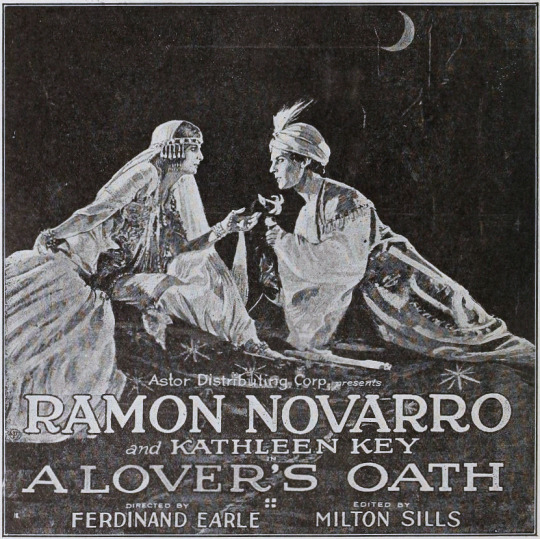
A new company, Astor Distribution Corp., was formed and purchased the distribution rights to Omar. Astor hired actor (note, not an editor) Milton Sills to re-cut the film to make Novarro and Key more prominent. The company also re-wrote the intertitles, reduced the films runtime by more than ten minutes, and renamed the film A Lover’s Oath. Earle had moved on by this point, vowing to never direct again. In fact, Earle was indirectly working with Novarro and Key again at the time, as an art director on Ben-Hur!
Despite Omar’s seemingly auspicious start in 1920, it was only released in the US on the states rights market as a cash-in on the success of one of its actors in a re-cut form five years later.
That said, A Lover’s Oath still received some good reviews from those who did manage to see it. Most of the negative criticism went to the story, intertitles, and Sills’ editing.
What kind of legacy could/should Omar have had? I’m obviously limited in my speculation by the fact that the film is lost, but there are a few key facts about the film’s production, release, and timing to consider.
The production budget was stated to be $174,735. That is equivalent to $3,246,994.83 in 2024 dollars. That is a lot of money, but since the production was years long and Omar was a period film set in a remote locale and features fantastical special effects sequences, it’s a modest budget. For contemporary perspective, Robin Hood (1922, extant) cost just under a million dollars to produce and Thief of Bagdad (1924, extant) cost over a million. For a film similarly steeped in spectacle to have nearly 1/10th of the budget is really very noteworthy. And, perhaps if the film had ever had a proper release in the US—in Earle’s intended form (that is to say, not the Sills cut)—Omar may have made as big of a splash as other epics.
It’s worth noting here however that there are a number of instances in contemporary trade and fan magazines where journalists off-handedly make this filmmaking experiment about undermining union workers. Essentially implying that that value of Earle’s method would be to continue production when unionized workers were striking. I’m sure that that would absolutely be a primary thought for studio heads, but it certainly wasn’t Earle’s motivation. Often when Earle talks about the method, he focuses on being able to film things that were previously impossible or impracticable to film. Driving down filming costs from Earle’s perspective was more about highlighting the artistry of his own specialty in lieu of other, more demanding and time-consuming approaches, like location shooting.
This divide between artists and studio decision makers is still at issue in the American film and television industry. Studio heads with billion dollar salaries constantly try to subvert unions of skilled professionals by pursuing (as yet) non-unionized labor. The technical developments of the past century have made Earle’s approach easier to implement. However, just because you don’t have to do quite as much math, or time an actor’s movements to a metronome, does not mean that filming a combination of painted/animated and live-action elements does not involve skilled labor.
VFX artists and animators are underappreciated and underpaid. In every new movie or TV show you watch there’s scads of VFX work done even in films/shows that have mundane, realistic settings. So, if you love a film or TV show, take the effort to appreciate the work of the humans who made it, even if their work was so good you didn’t notice it was done. And, if you’ve somehow read this far, and are so out of the loop about modern filmmaking, Disney’s “live-action” remakes are animated films, but they’ve just finagled ways to circumvent unions and low-key delegitimize the skilled labor of VFX artists and animators in the eyes of the viewing public. Don’t fall for it.
VFX workers in North America have a union under IATSE, but it’s still developing as a union and Marvel & Disney workers only voted to unionize in the autumn of 2023. The Animation Guild (TAG), also under the IATSE umbrella,�� has a longer history, but it’s been growing rapidly in the past year. A strike might be upcoming this year for TAG, so keep an eye out and remember to support striking workers and don’t cross picket lines, be they physical or digital!
Speaking of artistry over cost-cutting, I began this post with a mention that in the early 1920s, the American film industry was developing an inferiority complex in regard to its own artistry. This was in comparison to the European industries, Germany’s being the largest at the time. It’s frustrating to look back at this period and see acceptance of the opinion that American filmmakers weren’t bringing art to film. While yes, the emergent studio system was highly capitalistic and commercial, that does not mean the American industry was devoid of home-grown artists.
United Artists was formed in 1919 by Douglas Fairbanks, Charlie Chaplin, Mary Pickford, and D.W. Griffith precisely because studios were holding them back from investing in their art—within the same year that Earle began his Omar project. While salaries and unforgiving production schedules were also paramount concerns in the filmmakers going independent, a primary impetus was that production/distribution heads exhibited too much control over what the artists were trying to create.
Fairbanks was quickly expanding his repertoire in a more classical and fantastic direction. Cecil B. DeMille made his first in a long and very successful string of ancient epics. And the foreign-born children of the American film industry, Charlie Chaplin, Rex Ingram, and Nazimova, were poppin’ off! Chaplin was redefining comedic filmmaking. Ingram was redefining epics. Nazimova independently produced what is often regarded as America’s first art film, Salome (1923, extant), a film designed by Natacha Rambova, who was *gasp* American. Earle and his brother, William, had ambitious artistic visions of what could be done in the American industry and they also had to self-produce to get their work done.
Meanwhile, studio heads, instead of investing in the artists they already had contracts with, tried to poach talent from Europe with mixed success (in this period, see: Ernst Lubitsch, F.W. Murnau, Benjamin Christensen, Mauritz Stiller, Victor Sjöström, and so on). I’m in no way saying it was the wrong call to sign these artists, but all of these filmmakers, even if they found success in America, had stories of being hired to inject the style and artistry that they developed in Europe into American cinema, and then had their plans shot down or cut down to a shadow of their creative vision. Even Stiller, who tragically died before he had the opportunity to establish himself in the US, faced this on his first American film, The Temptress (1926, extant), on which he was replaced. Essentially, the studio heads’ actions were all hot air and spite for the filmmakers who’d gone independent.

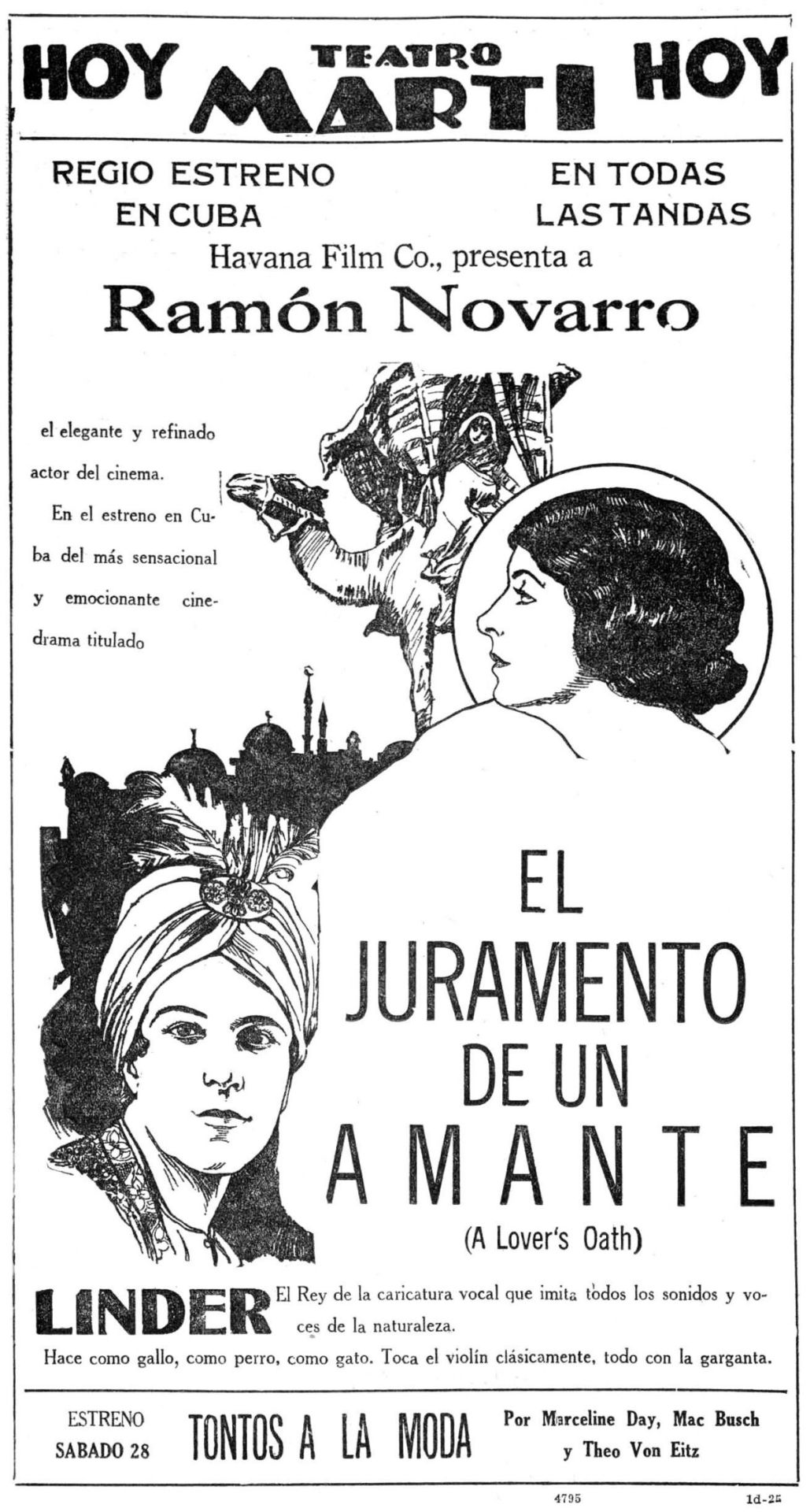
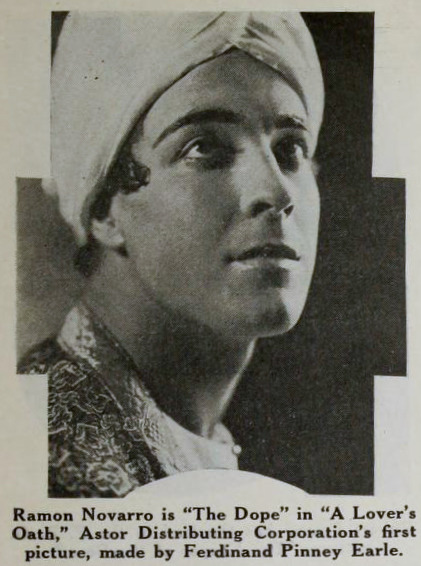

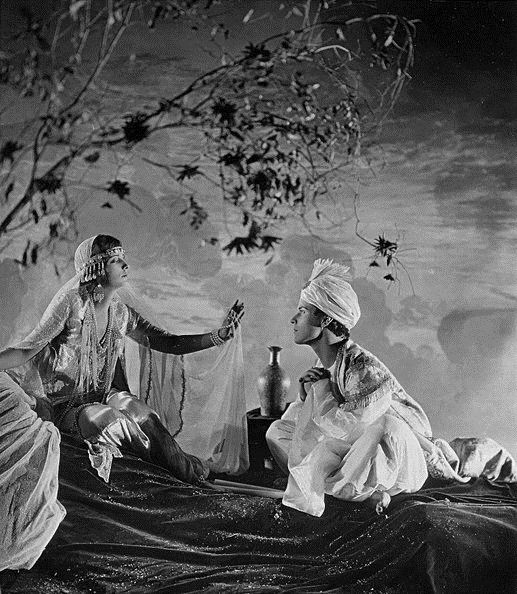
Finally I would like to highlight Ferdinand Earle’s statement to the industry, which he penned for from Camera in 14 January 1922, when his financial backers kidnapped his film to re-edit it on their terms:
MAGNA CHARTA
Until screen authors and producers obtain a charter specifying and guaranteeing their privileges and rights, the great slaughter of unprotected motion picture dramas will go merrily on.
Some of us who are half artists and half fighters and who are ready to expend ninety per cent of our energy in order to win the freedom to devote the remaining ten per cent to creative work on the screen, manage to bring to birth a piteous, half-starved art progeny.
The creative artist today labors without the stimulus of a public eager for his product, labors without the artistic momentum that fires the artist’s imagination and spurs his efforts as in any great art era.
Nowadays the taint of commercialism infects the seven arts, and the art pioneer meets with constant petty worries and handicaps.
Only once in a blue moon, in this matter-of-fact, dollar-wise age can the believer in better pictures hope to participate in a truely [sic] artistic treat.
In the seven years I have devoted to the screen, I have witnessed many splendid photodramas ruined by intruding upstarts and stubborn imbeciles. And I determined not to launch the production of my Opus No. 1 until I had adequately protected myself against all the usual evils of the way, especially as I was to make an entirely new type of picture.
In order that my film verison [sic] of the Rubaiyat of Omar Khayyam might be produced under ideal conditions and safeguarded from intolerable interferences and outside worries, I entered into a contract with the Rubaiyat, Inc., that made me not only president of the corporation and on the board of directors, but which set forth that I was to be author, production manager, director, cutter and film editor as well as art director, and that no charge could be made against the production without my written consent, and that my word was to be final on all matters of production. The late George Loane Tucker helped my attorney word the contract, which read like a splendid document.
Alas, I am now told that only by keeping title to a production until it is declared by yourself to be completed is it safe for a scenario writer, an actor or a director, who is supposedly making his own productions, to contract with a corporation; otherwise he is merely the servant of that corporation, subject at any moment to discharge, with the dubious redress of a suit for damages that can with difficulty be estimated and proven.
Can there be any hope of better pictures as long as contracts and copyrights are no protection against financial brigands and bullies?
We have scarcely emerged from barbarism, for contracts, solemnly drawn up between human beings, in which the purposes are set forth in the King’s plainest English, serve only as hurdles over which justice-mocking financiers and their nimble attorneys travel with impunity, riding rough shod over the author or artist who cannot support a legal army to defend his rights. The phrase is passed about that no contract is invioliable [sic]—and yet we think we have reached a state of civilization!
The suit begun by my attorneys in the federal courts to prevent the present hashed and incomplete version of my story from being released and exhibited, may be of interest to screen writers. For the whole struggle revolves not in the slightest degree around the sanctity of the contract, but centers around the federal copyright of my story which I never transferred in writing otherwise, and which is being brazenly ignored.
Imagine my production without pictorial titles: and imagine “The Rubaiyat” with a spoken title as follows, “That bird is getting to talk too much!”—beside some of the immortal quatrains of Fitzgerald!
One weapon, fortunately, remains for the militant art creator, when all is gone save his dignity and his sense of humor; and that is the rapier blade of ridicule, that can send lumbering to his retreat the most brutal and elephant-hided lord of finance.
How edifying—the tableau of the man of millions playing legal pranks upon men such as Charles Wakefield Cadman, Edward S. Curtis and myself and others who were associated in the bloody venture of picturizing the Rubaiyat! It has been gratifying to find the press of the whole country ready to champion the artist’s cause.
When the artist forges his plowshare into a sword, so to speak, he does not always put up a mean fight.
What publisher would dare to rewrite a sonnet of John Keats or alter one chord of a Chopin ballade?
Creative art of a high order will become possible on the screen only when the rights of established, independent screen producers, such as Rex Ingram and Maurice Tourneur, are no longer interferred with and their work no longer mutilated or changed or added to by vandal hands. And art dramas, conceived and executed by masters of screen craft, cannot be turned out like sausages made by factory hands. A flavor of individuality and distinction of style cannot be preserved in machine-made melodramas—a drama that is passed from hand to hand and concocted by patchworkers and tinkerers.
A thousand times no! For it will always be cousin to the sausage, and be like all other—sausages.
The scenes of a master’s drama may have a subtle pictorial continuity and a power of suggestion quite like a melody that is lost when just one note is changed. And the public is the only test of what is eternally true or false. What right have two or three people to deprive millions of art lovers of enjoying an artist’s creation as it emerged from his workshop?
“The Rubaiyat” was my first picture and produced in spite of continual and infernal interferences. It has taught me several sad lessons, which I have endeavored in the above paragraphs to pass on to some of my fellow sufferers. It is the hope that I am fighting, to a certain extent, their battle that has given me the courage to continue, and that has prompted me to write this article. May such hubbubs eventually teach or inforce a decent regard for the rights of authors and directors and tend to make the existence of screen artisans more secure and soothing to the nerves.
FERDINAND EARLE.
---
☕Appreciate my work? Buy me a coffee! ☕
Transcribed Sources & Annotations over on the WMM Blog!
See the Timeline for Ferdinand P. Earle's Rubaiyat Adaptation
#1920s#1923#1925#omar khayyam#ferdinand pinney earle#ramon novarro#independent film#american film#silent cinema#silent era#silent film#classic cinema#classic movies#classic film#film history#history#Charles Wakefield Cadman#cinematography#The Rubaiyat#cinema#film#lost film
50 notes
·
View notes
Text
Easy Company Members Sorted Between Surviving and Not Surviving WWII:
Died During the War:
Company Commanders:
First Lieutenant Thomas Meehan III (July 8th, 1921 - June 6th, 1944)
Non-commissioned Officers:
Sergeant Warren Harold "Skip" Muck (January 31st, 1922 - January 10th, 1945)
Enlisted Men:
Corporal Donald B. "Hoob" Hoobler (June 28th, 1922 - January 3rd, 1945)
Private First Class Alex Mike Penkala (August 30th, 1924 - January 10th, 1945)
Survived the War:
Company Commanders:
Captain Herbert Maxwell Sobel (January 26th, 1912 - September 30th, 1987)
Major Richard Davis "Dick" Winters (January 21st, 1918 - January 2nd, 2011)
First Lieutenant Frederick Theodore "Moose" Heyliger (June 23rd, 1916 - November 3rd, 2001)
First Lieutenant Norman Staunton "Foxhole Norman" Dike Jr. (May 19th, 1918 - June 23rd, 1989)
Captain Ronald Charles Speirs (April 20th, 1920 - April 11th, 2007)
Junior Officers:
Captain Lewis Nixon (September 30th, 1918 - January 11th, 1995)
First Lieutenant Lynn Davis "Buck" Compton (December 31st, 1921 - February 25th, 2012)
First Lieutenant Edward David "Ed" Shames (June 13th, 1922 - December 3rd, 2021)
Second Lieutenant Robert Burnham "Bob" Brewer (January 31st, 1924 - December 5th, 1996)
Second Lieutenant Clifford Carwood "Lip" Lipton (January 30th, 1920 - December 16th, 2001)
Non-commissioned Officers:
Technical Sergeant Donald George "Don" Malarkey (July 30th, 1920 - September 30th, 2017)
Staff Sergeant William J. "Wild Bill" Guarnere Sr. (April 28th, 1923 - March 8th, 2014)
Staff Sergeant Herman "Hank, Hack" Hanson (January 3rd, 1918 - May 15th, 1971)
Staff Sergeant Denver "Bull" Randleman (November 20th, 1920 - June 26th, 2003)
Staff Sergeant Darrell Cecil "Shifty" Powers (March 13th, 1923 - June 17th, 2009)
Staff Sergeant John W. "Johnny" Martin (December 8th, 1921 - December 31st, 2012)
Staff Sergeant Floyd "Tab" Talbert (August 26th, 1923 - October 10th, 1982)
Staff Sergeant Charles E. "Chuck" Grant (March 1922 - October 12th, 1982)
Staff Sergeant Joseph John "Joe" Toye (March 14th, 1919 - September 3rd, 1995)
Sergeant Robert Emory "Popeye" Wynn Jr. (July 10th, 1921 - March 18th, 2000)
Sergeant James H. "Moe" Alley (July 20th, 1922 - March 14th, 2008)
Sergeant Wayne "Skinny" Sisk (March 4th, 1922 - July 13th, 1999)
Corporal Walter Scott "Smokey" Gordon Jr. (April 15th, 1920 - April 19th, 1997)
Enlisted Men:
Technician Fourth Grade George Luz (June 17th, 1921 - October 15th, 1998)
Technician Fourth Grade Eugene Gilbert "Doc" Roe Sr. (October 17th, 1922 - December 30th, 1998)
Technician Fifth Grade Joseph David "Joe" Liebgott (May 17th, 1915 - June 28th, 1992)
Private First Class Edward James "Babe" Heffron (May 16th, 1923 - December 1st, 2013)
Private First Class Edward Joseph "Tip" Tipper (August 3rd, 1921 - February 1st, 2017)
Private First Class David Kenyon Webster (June 2nd, 1922 - September 9th, 1961)
*This is not all of Easy Co. just some of the more recognizable names. If I missed anyone that you would like to see listed please message me and I would be glad to add him.
**I was also thinking about adding more info to this list and/or making a separate post with additional details like awards/medals, how and where they were wounded (if at all), and maybe some personal details like where they were born/died, their family (parents, siblings, spouse, children), what they did after the war (if they survived) stuff like that (though that might be a separate list idk yet). I would love to hear your opinion and if you'd like to see something like this. Basically just one large masterpost! Message me and tell me your thoughts!!!! I'm open to ideas!
#I did a thing#BoB#band of brothers#Easy Company#Easy Co#Skip Muck#Alex Penkala#Donald Hoobler#Sobel#Dick Winters#Moose Heyliger#Norman Dike#Ronald Speirs#Lewis Nixon#Buck Compton#Carwood Lipton#Bill Guarnere#Don Malarkey#Babe Heffron#Shifty Powers#Floyd Talbert#Joe Liebgott#George Luz#Eugene Roe#Joe Toye#David Webster#Skinny Sisk
61 notes
·
View notes
Text
Names ideas for your original character(s)!!! <3

FIRST NAMES (FEMALE)
Beverly
Evangeline
Bonnie
Mackenzie
Evelyn
Mia
Marina
Lana
Jane
Maxine
Chloe
Beatrice
Zoe/Zoey
Rachel
Ella
Ellie
Wendy
Winifred
Tanya
Sonya
Theresa
Sandra
Andrea
Alexandria
Diana
Dana
Victoria
Veronica
Joyce
Juliana
Julie
Juliet/Juliette
Julia
Lily
Lola
Melody
Amanda
Olivia
Vivianne/Vivian
Charlotte
Yasmin
Madeline/Madelyn
Hannah
Bethany
Anne/Ann
Annie
Fiona
Faye/Fay
Alison
Natalie
Sasha
Isabella/Isabela
Isabelle
Eunice
Violet
Caitlin/Caitlyn/Katelyn
Miranda
Cassandra
Rosemary
Mary
Maria
Laura
Ramona
Nancy
Erica
Daisy
Darlene
Miriam
Jean
Janice
Eleanor/Elinor
Nora
Ginevra
Margaret
Marguerite
Ophelia
Annabeth
Nicole
Diedre
Siobhan
Molly
Holly
Milicent
Doris
Francesca
Elizabeth
Catherine
Daphne
Penelope
Eloise
Priscilla
Sofia
Celine
Karina
Irene
Jennifer
Roseanne

FIRST NAMES (MALE)
Samuel
Christopher
Michael
Lucas
Austin
Dustin
Steve
William
Nathaniel
Warren
James
Ethan
Anthony
Richard
Edward
Edmund
Clark
Trevor
Sean/Shawn
Fitzwilliam
Marcus/Markus
Liam
Charles
Jonathan/Johnathan
Bruce
Daniel
Theodore
Peter
Earnest
Bucky
Damon
Louis
Bryce
Gordon
Maxwell
Maximillian
Seth
Kurt
Thomas
Oscar
Scott
Frederick
Leon
Sebastian
Russell
Trent
Justin
Joshua
Vernon
Davis

FIRST NAMES (UNISEX)
Harley
Robin
Quinn
Casey
Lesley/Leslie
Blake
Bailey
Aubrey
Sydney
Cameron

(LAST) NAMES
Hastings
Marino
De Luca
Hopkins
Hopper
Harrington
Hargrove
Mayflower
Mayfield
Flowers
MacMillan
Price
Caulfield
Mayfield
Redfield
Baker
Prescott
Sinclair
Starling
Taylor
Vendome
Vincent
Jones
Trudeau
Barnes
Richardson
Bowers
Wheeler
Byers
O'Connor
O'Neil/O'Neill
Day
Ellison
Henderson
Anderson
Wayne
Danvers
White
Hall
Green/Greene
Carlson
Wilson
Edwards
MacTavish
Waterhouse
Gilmore
Montgomery
Harmon
Winters
Quinton
Seymour
Berman
Whitmore
Lovett
Kennedy
Walker
Johnson

That's all for the name ideas!!! Hope this'll help you if you're struggling to come up with a name :3
6 notes
·
View notes
Text
Rules, Guidelines, etc.:
[Used to be: ronaldrx]
I'm a hobby writer and mostly write (x Reader) FanFictions and Headcanons. But I am also working on my original story whenever I can, so that I’ll hopefully publish it as an actual book someday. My Ao3.
Here’s a link to my Ko-Fi, in case you want to support me financially. It would mean a lot to me! (Obviously no obligation whatsoever! You never have to pay for anything on my blog, it’s merely an option for donations.)
Also, here are my sideblogs if you’re interested:
Dead Poets Society
Horror
Raúl Esparza
The Simpsons
Only ask for the characters I’ve got listed, please. I’ve written down all of the ones I actually write for, and the list is being updated regularly, as I often find new (actors, whose) characters I write for! (And yes, I always write for every character, so don’t ever worry if you wanna ask for one I haven’t written for in a long time, or ever, it’s fine!) Please always be patient with me. If I haven’t outright declined your request, it’s definitely in the works; even if it has been weeks or months since you���ve sent it in! And only send your requests via ASKs. No DMs or comments, please.
If you have a request, send an Ask to my inbox.
NO sexual NSFW requests, please (more details further down).
Requests = CLOSED (Max. Limit: 10)
Current number of requests: 10
Last updated: October 29, 2023
Masterlists are linked with fandoms/actors/characters below. I WRITE FOR:
ALFRED MOLINA characters:
Doctor Otto Octavius/Doctor Octopus
DAVID DASTMALCHIAN characters:
Abner Krill/Polka-Dot Man
Bob Taylor
Denham
James Lewis
Johnson
Kurt Goreshter
Lonny Crane
Murdoc
Philippe/Abra Kadabra
Simon Lynch
Thomas Schiff
ETHAN HAWKE characters:
Arthur Harrow
Ellison Oswalt
Goodnight Robicheaux
James Sandin
EWAN MCGREGOR characters:
Alex Law
Catcher Block
Christopher Robin
Curt Wild
Dan Torrance
John Bishop
Mark Renton
Obi-Wan Kenobi
Roman Sionis/Black Mask* (Birds of Prey - Masc!Reader only) [Any other version of Roman Sionis/Black Mask can be with a Gender Neutral/Female!Reader.]
HUGH DANCY characters:
Adam Raki
Cal Roberts
Luke Brandon
Executive ADA Nolan Price
Will Graham
KARL URBAN characters:
Billy Butcher
Black Hat
John Kennex
Dr. Leonard "Bones" McCoy
Markiplier EGOS:
Darkiplier
Illinois
Wilford Warfstache
Yancy
PAUL DANO characters:
Alex Jones/Barry Milland [Platonic only!]
Dwayne Hoover [Platonic only!]
Edward Nashton/The Riddler
Eli Sunday
Jay (Okja)
Joby Taylor
Klitz
PEDRO PASCAL characters:
Agent Whiskey
Dave York
Dio Morrissey
Eddie
Ezra
Francisco “Catfish” Morales
Marcus Moreno
Marcus Pike
Max Phillips
Maxwell Lord
Oberyn Martell
Ricky Hauk
RAÚL ESPARZA characters:
Bobby
Dr. Frederick Chilton*
Jackson Neill
Jonas Nightingale
Rafael Barba
Characters from 9-1-1 (Lone Star):
Carlos Reyes*
Eddie Diaz
Evan “Buck” Buckley
Howard “Chimney” Han
Josh Russo*
Mateo Chavez
Paul Strickland
Bobby Nash
Tim Rosewater
TK Strand*
Characters from Law and Order(: Special Victims Unit):
Detective/ADA Dominick “Sonny” Carisi, Jr.
Sergeant Mike Dodds
Detective Nick Amaro
Executive ADA Nolan Price
ADA Peter Stone
ADA Rafael Barba
Deputy Chief William Dodds
Little Miss Sunshine:
Dwayne Hoover [Platonic only!]
Frank*
Our Flag Means Death:
Edward Teach/Blackbeard*
Frenchie
Izzy Hands
Stede Bonnet*
Prisoners (2013):
Alex Jones/Barry Milland [Platonic only!]
Bob Taylor
Detective David Loki
Renfield (2023):
Count Dracula
Robert Montague Renfield
Tedward “Teddy” Lobo
SLASHERS/Horror Film Characters:
Asa Emory/The Collector
Ash J. Williams [I will usually default to Ash from the TV show, unless requested otherwise!]
Billy Lenz (1974)
Billy Loomis
Bo Sinclair
Brahms Heelshire
Bubba Sawyer/Leatherface (TCM 1974 and TCM 2)
Charles Lee Ray/Chucky
Chop Top Sawyer
Corey Cunningham
Dewey Riley
Drayton Sawyer
Herbert West*
Jesse Cromeans/Chromeskull
Lawrence Gordon
Lester Sinclair
Luigi Largo
Mark Hoffman
Nubbins Sawyer
Pavi Largo
Stu Macher
Vincent Sinclair
William Easton
Star Wars:
Anakin Skywalker
Obi-Wan Kenobi
Qui-Gon Jinn
The Girl Next Door:
Klitz
Eli
Characters from The Simpsons:
Cecil Terwilliger*
Fat Tony
Frankie the Squealer
Grady*
Jack Lassen
Johnny Tightlips
Julio*
Legs
Louie
Moe Szyslak
Ned Flanders
Otto Mann
Seymour Skinner
Sideshow Bob
Sideshow Mel
Snake Jailbird
Timothy Lovejoy
Waylon Smithers*
What We Do in the Shadows:
Anton (Movie)
Deacon
Guillermo de la Cruz*
Laszlo Cravensworth
Nandor the Relentless
Viago
Vladislav
* Please note that an asterisk (*) means that these characters are Male/Masc/GenderNeutral!Reader only (including non-binary, of course). Platonic relationships with Female!Reader are possible, but no romantic ones.
If it’s a character that is open to all Readers, and you do not specify in your request what you want, I’ll usually opt for a Gender Neutral Reader by default.
SHIPS, such as:
BlackBonnet (OFMD)
SteddyHands (OFMD)
Black Pete x Lucius Spriggs (OFMD)
Buck x Josh Russo (9-1-1)
Dracfield (Renfield 2023)
Buddie (9-1-1)
Eli x Klitz (The Girl Next Door)
Nandermo (WWDITS)
Herbert West x Dan Cain (Re-Animator)
McKirk (Star Trek: AOS)
Oluwande x Jim Jimenez (OFMD)
Barisi (Law & Order SVU)
Renfield x Teddy Lobo (Renfield 2023)
Sickrent (Trainspotting/T2)
Stobotnik (Sonic Movie)
Tarlos (9-1-1: Lone Star)
AnderPerry (Dead Poets Society)
ZsaszMask (Birds of Prey)
Lastly, I would like to add things I will NOT write (about):
Sexual NSFW fics/headcanons (I used to write those as you can see in my Masterlists, but I have my reasons for not writing them anymore. Any hints at sexual topics are fine).
Anything related to death as the main subject (this includes deadly diseases, anything fatal, really, etc.).
Anything that romanticizes Mental Illness (my Vent Fics about my own disorders obviously do not romanticize any of it and I do not stand for that).
(Recreational) Drug Use
Extreme Possessive Behaviour and/or Jealousy
Yandere
If you have something you would like me to write for, but you do not see it listed anywhere, please ask me before requesting it, so we can talk about it. I hope you enjoy yourself on my blog and have a good time!
My Asks and DMs are always open for any questions or simply to talk!
- Jesse
37 notes
·
View notes
Text


INVASION of the BODY SNATCHERS (1978) written by W.D. Richter (from the novel by Jack Finney) produced by Robert Solo directed by Philip Kaufman starring Donald Sutherland Brooke Adams Leonard Nimoy Jeff Goldblum Veronica Cartwright Art Hindle cinematography by Michael Chapman edited by Douglas Stewart music by Danny Zeitlin

JAWS (1975) written by Carl Gottlieb (from the novel by Peter Benchley) produced by Richard D. Zanuck and David Brown directed by Steven Spielberg starring Roy Scheider Robert Shaw Richard Dreyfus Lorraine Gary Murray Hamilton Carl Gottlieb cinematography by Bill Butler edited by Verna Fields music by John Williams
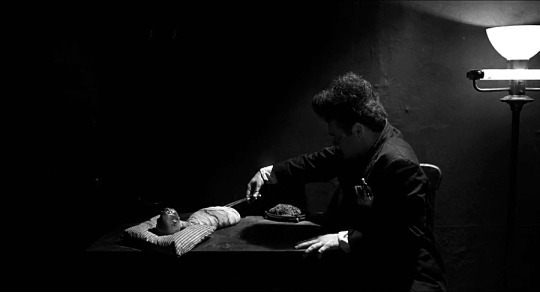
E r a s e r h e a d (1977) written, directed and produced by David Lynch starring Jack Nance Charlotte Stewart Allen Joseph Jeanne Bates Judith Roberts Laurel Near Jack Fisk cinematography by Frederick Elmes Herbert Caldwell edited by David Lynch sound design by Lynch w/ Alan Splet special effects by Lynch w/ Frederick Elmes
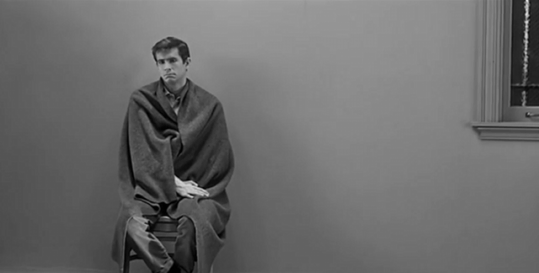
P s y c h o (1960) written by Joseph Stefano (from the novel by Robert Bloch) directed and produced by Alfred Hitchcock starring Anthony Perkins Vera Miles John Gavin Janet Leigh Martin Balsam Simon Oakland cinematography by John L. Russell edited by George Tomasini music by Bernard Hermann

A L I E N (1979) written by Dan O'Bannon (story by Dan O'Bannon and Ronald Sushett) directed by Ridley Scott produced by Gordon Carroll David Giler Walter Hill starring Tom Skerritt Sigourney Weaver Veronica Cartwright John Hurt Harry Dean Stanton Yaphet Kotto Ian Holm cinematography by Derek Vanlint edited by Terry Rawlings music by Jerry Goldsmith

John Carpenter's The THING (1982) written by Bill Lancaster (from the novella "Who Goes There?" by John W. Campbell) directed by John Carpenter produced by David Foster Lawrence Turman Wilbur Stark starring Kurt Russell A. Wilford Briley T.K. Carter David Clennon Keith David Richard Dysart Charles Hallahan Peter Maloney Richard Masur Donald Moffat Joel Polis Thomas Waites cinematography by Dean Cundey edited by Todd Ramsay music by Ennio Morricone
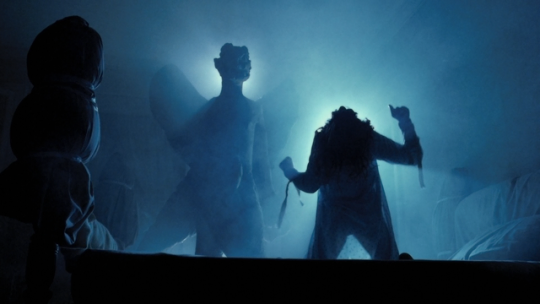
The Exorcist (1973) written by William Peter Blatty (from his novel) directed by William Friedkin produced by William Peter Blatty Noel Marshall David Salven starring Ellen Burstyn Max Von Sydow Jason Miller Lee J. Cobb Jack MacGowran Kitty Winn Mercedes McCambridge Linda Blair cinematography by Owen Roizman edited by Norman Gay Evan Lottman music by Jack Nitzche "Tubular Bells" by Mike Oldfield

R e p u l s i o n (1965) written by Roman Polanski Garard Brach screenplay adaptation by David Stone directed by Roman Polanski produced by Gene Gutowski starring Catherine Deneuve Ian Hendry John Fraser Peter Wymark Yvonne Furneaux cinematography by Gilbert Taylor edited by Alastair McIntyre music by Chico Hamilton
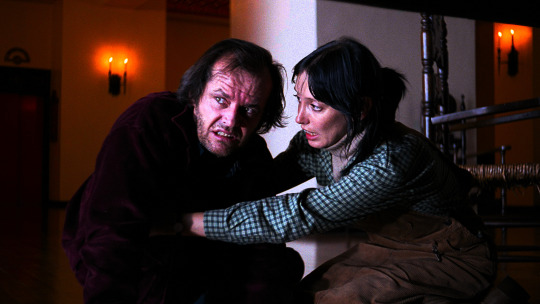
THE SHINING (1980) written by Diane Johnson Stanley Kubrick (from the novel by Stephen King) directed by Stanley Kubrick produced by Stanley Kubrick w/ Jan Harlan starring Jack Nicholson Shelley Duvall Danny Lloyd Scatman Crothers Barry Nelson Philip Stone Joe Turkel cinematography by John Alcott edited by Ray Lovejoy music by Wendy Carlos Rachel Elkind

Night of the Living Dead (1968) written by John Russo George A. Romero directed by George A. Romero produced by Karl Hardman Russell Streiner starring Duane Jones Judith O'Dea Karl Hardman Marilyn Eastman Keith Wayne Kyra Schon Judith Ridley cinematography by George A. Romero (uncr.) edited by George A. Romero (uncr.) Hugh Daly

Bram Stoker's Dracula (1992) written by James V. Hart (from the novel by Bram Stoker) directed by Francis Ford Coppola produced by Francis Ford Coppola Charles Mulvehill Fred Fuchs Michael Apted Robert O'Conner starring Gary Oldman Winona Ryder Anthony Hopkins Keanu Reeves Cary Elwes Richard E. Grant Billy Campbell Sadie Frost Monica Belluci Tom Waits cinematography by Michael Ballhaus edited by Anne Goursaud Glen Scantlebury Nicholas C. Smith music by Wojciech Kilar

TWIN PEAKS fire walk with me (1992) written by David Lynch Robert Engels (from the television series created by David Lynch and Mark Frost) directed by David Lynch produced by David Lynch Mark Frost Gregg Fienberg Johanna Ray John Wentworth starring Sheryl Lee Ray Wise Moira Kelly Grace Zabriskie Chris Isaak Kiefer Sutherland David Lynch Miguel Ferrer Harry Dean Stanton David Bowie Michael J. Anderson Frank Silva Al Strobel Jurgen Prochnow Dana Ashbrook James Marshall Frances Bay Catherine E. Coulson Kimberly Ann Cole Walter Olkewicz Lenny Von Dohlen Madchen Amick Peggy Lipton Julee Cruise Kyle Machlachlan cinematography by Ron Garcia edited by Mary Sweeney music by Angelo Badalamenti

Let the Right One In (2008) written by John Ajvide Lyndqvist (from his novel) directed by Tomas Alfredson produced by Frida Asp starring Kare Hedbrant Lina Leandersson Per Ragnar Henrik Dahl Ika Nord cinematography by Hoyte Van Hoytema edited by Tomas Alfredson Dino Jonsater music by Johan Soderqvist

W A R of the W O R L D S (2005) written by Josh Friedman David Koepp directed by Steven Spielberg produced by Kathleen Kennedy Damian Collier Paula Wagner Colin Wilson starring Tom Cruise Tim Robbins Dakota Fanning Miranda Otto Justin Chatwin Amy Ryan cinematography by Janusz Kaminski edited by Michael Kahn music by John Williams

Hannibal (2001) written by Steve Zaillian David Mamet directed by Ridley Scott produced by Martha De Laurentiis Dino De Laurentiis Ridley Scott starring Anthony Hopkins Julianne Moore Ray Liotta Gary Oldman Frankie Faison Giancarlo Giannini Francesca Neri Zeljko Ivanek Hazelle Goodman cinematography by John Mathieson editing by Pietro Scalia music by Hans Zimmer

The Hunger (1983) written by Ivan Davis Michael Thomas (from the novel by Whitley Strieber) directed by Tony Scott produced by Richard Shepherd starring Catherine Deneuve Susan Sarandon David Bowie Cliff De Young cinematography by Stephen Goldblatt edited by Pamela Power music by Michel Rubini Denny Jaeger

DON'T LOOK NOW (1973) written by Allan Scott Chris Bryant (based on the novella by Daphne Du Maurier) directed by Nicholas Roeg produced by Peter Katz starring Donald Sutherland Julie Christie Hilary Mason Clelia Matania Renato Scarpa cinematography by Anthony Richmond editing by Graeme Clifford music by Pino Donnagio

Prisoners (2013) written by Aaron Guzikowski directed by Denis Villeneuve produced by Broderick Johnson Kira Davis Andrew A. Kosove Adam Kolbrenner starring Jake Gylenhaal Hugh Jackman Maria Bello Viola Davis Melissa Leo Terrence Howard Paul Dano cinematography by Roger Deakins edited by Joel Cox Gary Roach music by Johann Johannsson

The Company of Wolves (1984) written by Neil Jordan Angela Carter (from the short story in Angela Carter's book "The Bloody Chamber and Other Stories") directed by Neil Jordan produced by Chris Brown Stephen Woolley starring Sarah Patterson David Warner Angela Lansbury Micha Bergese Stephen Rea cinematography by Bryan Loftus edited by Rodney Holland music by George Fenton

A Quiet Place (2018) written by Bryan Woods Scott Beck John Krasinski directed by John Krasinski produced by Michael Bay Andrew Form Brad Fuller starring Emily Blunt John Krasinski Millicent Simmonds Noah Jupe Cade Woodward cinematography by Charlotte Bruus Christensen edited by Christopher Tellefsen music by Marco Beltrami

W O R L D W A R Z (2013) written by Matthew Michael Carnahan Drew Goddard & Damon Lindelof (from the novel novel by Max Brooks) directed by Marc Forster produced by Brad Pitt Dede Gardner Jeremy Kleiner Ian Bryce starring Brad Pitt Mireille Enos Daniella Kertesz James Badge Dale Peter Capaldi Pierfrancesco Favino Ludi Boeken Matthew Fox Fana Mokoena David Morse cinematography by Ben Seresin edited by Roger Barton Matt Chesse music by Marco Beltrami

LOST H i g h w a y (1997) written by David Lynch Barry Gifford directed by David Lynch produced by Mary Sweeney Tom Sternberg Deepak Nayar starring Bill Pullman Patricia Arquette Balthazar Getty Natasha Gregson Wagner Robert Loggia Robert Blake Michael Massee Jack Nance Henry Rollins Gary Busey cinematography by Peter Deming edited by Mary Sweeney music by Angelo Badalamenti

N e a r D a r k (1987) written by Kathryn Bigelow Eric Red directed by Kathryn Bigelow produced by Edward S. Feldman Steven-Charles Jaffe Charles Meeker starring Adrian Pasdar Jenny Wright Lance Henriksen Bill Paxton Jenette Goldstein Tim Thomerson cinematography by Adam Greenberg edited by Howard Smith music by Tangerine Dream
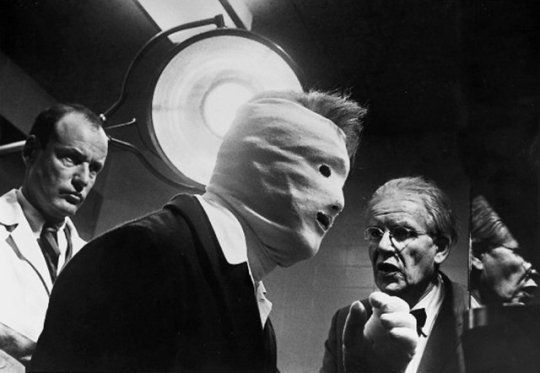
S e c o n d s (1966) written by Lewis John Carlino (from the novel by David Ely) directed by John Frankenheimer produced by John Frankenheimer Edward Lewis starring Rock Hudson Salome Jens John Randolph Will Geer Jeff Corey Murray Hamilton Frances Reid cinemtography by Tak Fujimoto edited by David Newhouse Ferris Webster music by Jerry Goldsmith

Nosferatu The Vampyre (1979) written by Werner Herzog w/ Tom Shachtman Martje Grohmann directed by Werner Herzog produced by Walter Saxer Werner Herzog Michael Gruskoff starring Klaus Kinski Isabelle Adjani Bruno Ganz Roland Topor Walter Landengast Martje Grohmann cinematography by Jorg Schmidt-Reitwein edited by Beate Mainka-Jellinghaus music by Florian Fricke Popol Vuh
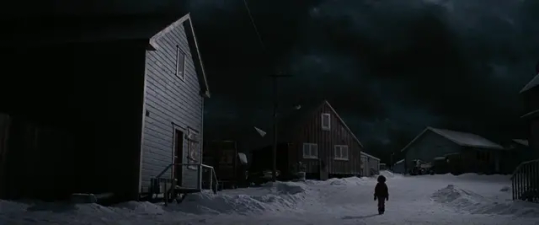
30 DAYS of NIGHT (2007) written by Steve Niles Stuart Beattie Brian Nelson (from the graphic novel by Steve Niles Ben Templesmith) directed by David Slade produced by Sam Raimi Robert Tapert starring Josh Hartnett Melissa George Danny Huston Ben Foster Mark Boone Jr. Amber Sainsbury Megan Franich Manu Bennett cinematography by Jo Willems edited by Art Jones music by Brian Reitzell

f r e a k s (1932) written by Willis Goldbleck Leon Gordon (from the short story "Spurs" by Tod Robbins) directed and produced by Tod Browning starring Wallace Ford Leila Hyams Olga Baclanova Roscoe Ates cinematography by Merritt B. Gerstad edited by Basil Wrangell

the M i s t (2007) written and directed by Frank Darabont (from the novella by Stephen King) produced by Frank Darabont Martin Shefer Liz Glotzer starring Thomas Jane Laurie Holden Marcia Gay Hardin Andre Braugher Toby Jones William Sadler Frances Sternhagen Jeffrey DeMunn cinematography by Rohn Schmidt edited by Hunter M. Via music by Mark Isham

Invasion of the BODY SNATCHERS (1956) written by Daniel Mainwaring (from the novel by Jack Finney) directed by Don Siegel produced by Walter Wanger starring Kevin McCarthy Dana Wynter Larry Gates King Donovan Carolyn Jones Jean Willes Ralph Dumke cinematography by Ellsworth Fredericks edited by Robert S. Eisen music by Carmen Dragon
3 notes
·
View notes
Text
The adventures of two amiably aimless metal-head friends, Wayne and Garth. From Wayne’s basement, the pair broadcast a talk-show called “Wayne’s World” on local public access television. The show comes to the attention of a sleazy network executive who wants to produce a big-budget version of “Wayne’s World”—and he also wants Wayne’s girlfriend, a rock singer named Cassandra. Wayne and Garth have to battle the executive not only to save their show, but also Cassandra. Credits: TheMovieDb. Film Cast: Wayne Campbell: Mike Myers Garth Algar: Dana Carvey Benjamin Kane: Rob Lowe Cassandra: Tia Carrere Stacy: Lara Flynn Boyle Dreamwoman: Donna Dixon Security Guard: Chris Farley Noah Vanderhoff: Brian Doyle-Murray Alan: Michael DeLuise Tiny: Meat Loaf Bad Cop / T-1000: Robert Patrick Alice Cooper: Alice Cooper Glen: Ed O’Neill Mrs. Vanderhoff: Colleen Camp Terry: Lee Tergesen Russell Finley: Kurt Fuller Davy: Mike Hagerty Ron Paxton: Charles Noland Elyse: Ione Skye Frankie Sharp: Frank DiLeo Waitress: Robin Ruzan Officer Koharski: Frederick Coffin Old Man Withers: Carmen Filpi Film Crew: Original Music Composer: J. Peter Robinson Screenplay: Mike Myers Executive Producer: Hawk Koch Director of Photography: Theo van de Sande Director: Penelope Spheeris Producer: Lorne Michaels Editor: Malcolm Campbell Stunts: Hannah Kozak Stunts: Alisa Christensen Associate Producer: Dinah Minot Associate Producer: Barnaby Thompson Screenplay: Bonnie Turner Screenplay: Terry Turner Casting: Glenn Daniels Production Design: Gregg Fonseca Second Unit Director: Allan Graf First Assistant Director: John Hockridge Second Assistant Director: Joseph J. Kontra Set Decoration: Jay Hart Camera Operator: Martin Schaer “B” Camera Operator: David Hennings First Assistant Camera: Henry Tirl First Assistant “B” Camera: Peter Mercurio Steadicam Operator: Elizabeth Ziegler Script Supervisor: Adell Aldrich Sound Mixer: Tom Nelson Boom Operator: Jerome R. Vitucci Additional Editor: Earl Ghaffari Assistant Editor: Ralph O. Sepulveda Jr. Assistant Editor: Ann Trulove Assistant Editor: Brion McIntosh Supervising Sound Editor: John Benson Sound Effects Editor: Beth Sterner Sound Effects Editor: Joseph A. Ippolito Sound Effects Editor: Frank Howard Dialogue Editor: Michael Magill Dialogue Editor: Simon Coke Dialogue Editor: Bob Newlan Supervising ADR Editor: Allen Hartz Foley Supervisor: Pamela Bentkowski Assistant Sound Editor: Carolina Beroza Assistant Sound Editor: Thomas W. Small Foley Artist: Ken Dufva Foley Artist: David Lee Fein Foley Mixer: Greg Curda ADR Mixer: Bob Baron ADR Voice Casting: Barbara Harris Sound Re-Recording Mixer: Andy Nelson Sound Re-Recording Mixer: Steve Pederson Sound Re-Recording Mixer: Tom Perry Music Supervisor: Maureen Crowe Supervising Music Editor: Steve Mccroskey Set Designer: Lisette Thomas Set Designer: Gae S. Buckley Special Effects Makeup Artist: Thomas R. Burman Special Effects Makeup Artist: Bari Dreiband-Burman Makeup Artist: Courtney Carell Makeup Artist: Mel Berns Jr. Hairstylist: Kathrine Gordon Hairstylist: Barbara Lorenz Hairstylist: Carol Meikle Costume Supervisor: Pat Tonnema Costumer: Janet Sobel Costumer: Kimberly Guenther Durkin Location Manager: Ned R. Shapiro Assistant Location Manager: Serena Baker Second Second Assistant Director: John G. Scotti Property Master: Kirk Corwin Assistant Property Master: Peter A. Tullo Assistant Property Master: Jim Stubblefield Leadman: Robert Lucas Special Effects Coordinator: Tony Vandenecker Chief Lighting Technician: Jono Kouzouyan Production Office Coordinator: Lynne White Unit Publicist: Tony Angelotti Still Photographer: Suzanne Tenner Craft Service: Vartan Chakarian Transportation Coordinator: James Thornsberry Color Timer: David Bryden Negative Cutter: Theresa Repola Mohammed Title Designer: Dan Curry Second Unit Director of Photography: Robert M. Stevens Stunts: Tony Brubaker Stunt Double: Steve Kelso Movie Reviews: tmdb15435519: I wish I could dress the exact same every day and still be cool.
#aftercreditsstinger#best friends#breaking the fourth wall#buddy#duringcreditsstinger#heavy metal#multiple endings#parody#romantic rivalry#singer#television producer#Top Rated Movies#woman director
3 notes
·
View notes
Text
USS Albacore (SS-218), a 311-foot, Gato-class submarine lost 7 November 1944 of the coast of Hokkaido Japan, she was presumed lost on 21 December 1944 and struck from the Naval Vessel Register on 30 March 1945, found 16 February 2023.
The USS Albacore earned 9 battle stars, received 4 Presidential Unit Citations and was responsible for sinking at least 10 ships.
Below is a listing of the ships compliment, their names are written in memorial at the National Memorial Cemetary of the Pacific in Honolulu, Hawaii:
IN THESE GARDENS ARE RECORDED
THE NAMES OF AMERICANS
WHO GAVE THEIR LIVES
IN THE SERVICE OF THEIR COUNTRY
AND WHOSE EARTHLY RESTING PLACE
IS KNOWN ONLY TO GOD
Walter Henry Barber, Jr., Kenneth Ripley Baumer, Henry Forbes Bigelow, Jr., Edward Brown Blackmon, William Walter Bower, Allan Rose Brannam, Herbert Hodge Burch, Nicholas John Cado, John Joseph Carano, Charles Lee Carpenter, James Louis Carpenter, Pasquale Charles Carracino, Stanley Chapman, Douglas Childress, Jr., Frederick Herbert Childs, Jr., Perry Aubrey Collom, Audrey Cecil Crayton, Eugene Cugnin, John Wilber Culbertson, Philip Hugh Davis, Ray Ellis Davis, Fred Wallace Day, Julius Delfonso, James Leroy DeWitt, James Thomas Dunlap, Carl Hillis Eskew, John Francis Fortier, Jr., Gordon Harvey Fullilove, Jr., John Wilfred Gant, John Paul Gennett, William Henry Gibson, John Frederick Gilkeson, Charles Chester Hall, James Kenneth Harrell, Robert Daniel Hill, Allen Don Hudgins, Donald Patrick Hughes, Eugene Edsel Hutchinson, Burton Paul Johnson, Sheridan Patrick Jones, George Kaplafka, Nelson Kelley, Jr., Morris Keith Kincaid, Victor Edward Kinon, Joseph Mike Krizanek, Arthur Star Kruger,Walter Emery Lang, Jr., Jack Allen Little, Kenneth Walter Manful, Patrick Kennyless McKenna, Willie Alexander McNeill, Joseph Norfleet Mercer, Leonard David Moss, Richard Joseph Naudack, Encarnacion Nevarez, Joseph Hayes Northam, Frank Robert Nystrom, Robert James O'Brien, Elmer Harold Peterson, Charles Francis Pieringer, Jr., James Teel Porter, Jerrold Winfred Reed, Jr., Francis Albert Riley, Hugh Raynor Rimmer, A. B. Roberts, James Ernest Rowe, Philip Shoenthal, George Maurice Sisk, Joe Lewis Spratt, Harold William St. Clair, Arthur Lemmie Stanton, Robert Joseph Starace, John Henry Stephenson, Maurice Crooks Strattan, Earl Richard Tanner, William George Tesser, Paul Raymond Tomich, Charles Edward Traynor, Theodore Taylor Walker, Elmer Weisenfluh, James Donald Welch, Richard Albert West, Wesley Joseph Willans, Leslie Allan Wilmott, David Robert Wood
26 notes
·
View notes
Note
I hope this isn't annoying you please ignore if it is, but do you have any paintings/fanart/photos/tv or movie references for what Evelyn would look like? I absolutely love how you describe her, but i have aphantasia so i can't for the life of me picture her properly. I love making moodboards and things to use as a guide, so if you have any pictures/fanart you dont mind sharing I would really love that :))
It's not annoying my goodness!! You're so kind! I'm glad you've been liking the fic!
I have no eye for colour pallets or moodboards however, but I do like to save photos and paintings etc. when the mood strikes me. So I have a lot. None are super exact truly, but it was more for fashions and the ~vibes~
So! Evelyn! Female England. Featuring babies! Long post ahoy!
17th century Eva pre Civil War featuring her eldest boys...

- A Genoese Noblewoman and Her Son by Anthony van Dyck c.1626 - Detail from The Balbi Children by Anthony van Dyck c.1625 - Lady Frances Cranfield, Lady Buckhurst, later Countess of Dorset by Anthony Van Dyck, 1637
Moving through to the 18th century... When you start the century with one baby and swap it for another...

- Jane Duchess of Gordon and son George by George Romney, 1778 - Mrs. John Montresor by John Singleton Copley, 1778 (I had to go for this one - the red [riding] coat right?) - Lady Boston, nee Christian Methuen by George Romney, c1775 - A Lady, said to be Madame Danloux, nursing her child in a drawing room by François Guillaume Ménageot, c1785
Then the baby girl arrives and Oz isn't that good at studying and the entire time they're playing house there's a real feeling of 'this is just off' for about a hundred or so years. Mama's playing the role very well but boy is it exhausting.

- Mother with infant by James Francis Day, 1863 - Sewing on a button, Edouard Frère, 1882 - A Testing Question, Frederick Morgan, 1892 - Summer Hours of Childhood by Charles Lucy, 1869
More individual solo shots of art that I picked for melancholia and goth auras...

- Girl in Green by Sara Hayden, 1899 - On the Seashore by George Elgar Hicks, 1879 - Preparing for the Ball by Viktor Schramm, 1898 - The Pearl Necklace by Henry Tonks, c.1905 - Unknown Painting by Richard Johnson, c2000 - Little Brother & Little Sister by A. Rackham, 1917
And finally some actual photographs of assorted models, actresses and rich ladies from the late 19th century who I particularly was like yup. For modern day, someone like Imogen Poots I think could be neat. She has rabbit teeth, looks perpetually tired with racoon eyes and has wild hair.
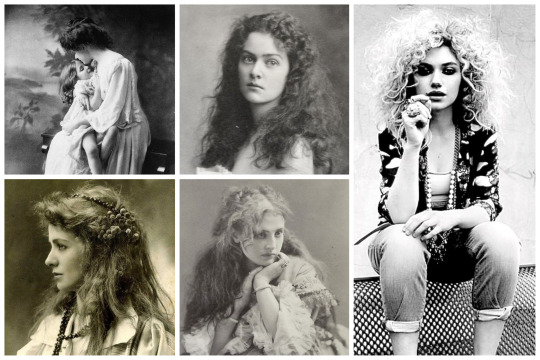
My intention is that by the end of the 19th century bit by bit the constraints are cracking and the poison is leaking out just in time for the World Wars. Still purging in the years that followed... nearly there by the end of the millennium. Just stop smoking hen.
#it's much easier to find portraits of mothers and children for most of history than fathers and children#like getting the equivalent of the kids and arthur is nigh impossible...#anyway#hope this was helpful! or fun is nothing else haha#fem!england#hetalia#hws england#q&a#headcanon#op#hws america#hws canada#hws australia#hws new zealand#fem!new zealand#five eyes group#fanfic ask#historical hetalia
17 notes
·
View notes
Text
Events 6.18 (before 1940)
618 – Li Yuan becomes Emperor Gaozu of Tang, initiating three centuries of Tang dynasty rule over China. 656 – Ali becomes Caliph of the Rashidun Caliphate. 860 – Byzantine–Rus' War: A fleet of about 200 Rus' vessels sails into the Bosphorus and starts pillaging the suburbs of the Byzantine capital Constantinople. 1053 – Battle of Civitate: Three thousand Norman horsemen of Count Humphrey rout the troops of Pope Leo IX. 1264 – The Parliament of Ireland meets at Castledermot in County Kildare, the first definitively known meeting of this Irish legislature. 1265 – A draft Byzantine–Venetian treaty is concluded between Venetian envoys and Emperor Michael VIII Palaiologos, but is not ratified by Doge Reniero Zeno. 1391 – Tokhtamysh–Timur war: Battle of the Kondurcha River: Timur defeats Tokhtamysh of the Golden Horde in present-day southeast Russia. 1429 – Charles VII's army defeats an English army under John Talbot at the Battle of Patay during the Hundred Years' War. The English lost 2,200 men, over half their army, crippling their efforts during this segment of the war. 1633 – Charles I is crowned King of Scots at St Giles' Cathedral, Edinburgh. 1684 – The charter of the Massachusetts Bay Colony is revoked via a scire facias writ issued by an English court. 1757 – Battle of Kolín between Prussian forces under Frederick the Great and an Austrian army under the command of Field Marshal Count Leopold Joseph von Daun in the Seven Years' War. 1778 – American Revolutionary War: The British Army abandons Philadelphia. 1799 – Action of 18 June 1799: A frigate squadron under Rear-admiral Jean-Baptiste Perrée is captured by the British fleet under Lord Keith. 1803 – Haitian Revolution: The Royal Navy led by Rear-Admiral John Thomas Duckworth commence the blockade of Saint-Domingue against French forces. 1812 – The United States declaration of war upon the United Kingdom is signed by President James Madison, beginning the War of 1812. 1815 – Napoleonic Wars: The Battle of Waterloo results in the defeat of Napoleon Bonaparte by the Duke of Wellington and Gebhard Leberecht von Blücher forcing him to abdicate the throne of France for the second and last time. 1822 – Konstantinos Kanaris blows up the Ottoman navy's flagship at Chios, killing the Kapudan Pasha Nasuhzade Ali Pasha. 1858 – Charles Darwin receives a paper from Alfred Russel Wallace that includes nearly identical conclusions about evolution as Darwin's own, prompting Darwin to publish his theory. 1859 – First ascent of Aletschhorn, second summit of the Bernese Alps. 1873 – Susan B. Anthony is fined $100 for attempting to vote in the 1872 presidential election. 1887 – The Reinsurance Treaty between Germany and Russia is signed. 1900 – Empress Dowager Cixi of China orders all foreigners killed, including foreign diplomats and their families. 1908 – Japanese immigration to Brazil begins when 781 people arrive in Santos aboard the ship Kasato-Maru. 1908 – The University of the Philippines is established. 1920 – The Troubles in Northern Ireland (1920–1922) begin with a week of sectarian violence in Derry. 1928 – Aviator Amelia Earhart becomes the first woman to fly in an aircraft across the Atlantic Ocean (she is a passenger; Wilmer Stultz is the pilot and Lou Gordon the mechanic). 1935 – Police in Vancouver, British Columbia, Canada, clash with striking longshoremen, resulting in a total of 60 injuries and 24 arrests.
1 note
·
View note
Text

Frederick Nathaniel “Toots” Hibbert (December 8, 1942 - September 11, 2020). He teamed with Henry “Raleigh” Gordon and Nathaniel “Jerry” Mathias to form a Reggae trio Toots and the Mayhils in Kingston, Jamaica (1962). The lineup included Paul Douglas, Radcliffe “Dougie” Bryan, Jackie Jackson, Carl Harvey, Marie “Twiggi” Gitten, Stephen Stewart, Charles Farquarson, Hux Brown, Harold Butler, Michelle Eugene, Winston Wright, Winston Grennan, Andy Bassford, and Leba Thomas.
The ensemble won the inaugural Jamaica Independence Festival Popular Song Competition with the single hit “Bam Bam.” At first called, the Maytals, they changed their name to Toots and the Maytals that produced three classic albums and a string of hits during the year.
He and the Maytals released the single “Do the Reggay,” the first song to use the name “reggae,” stimming from the Jamaican slang word “streggae.” They coined the word “reggae” and introduced to the world a new music genre. He and the Maytals first international album included the singles “Pressure Drop,” “54-46 was my number,” and “Monkey Man.” The ensemble’s “Pressure Drop” and “Sweet and Dandy,” were part of the soundtrack of The Harder They Come. They released Reggae Got Soul, their second album.
He and The Maytals released the album Knock Out! Soon after, they disbanded. They had reassembled with a new lineup. They were nominated twice for Grammy Awards for “Best Reggae Recording” for An Hour Live and “Best Reggae Album” for Ska Father.
He and the Maytals won the Grammy Award for “Best Reggae Album” for True Love. He was conferred Jamaica’s fifth highest honor, the Order of Jamaica. At the 55th Annual Grammy Awards, they were nominated for “Best Reggae Album” for Got Soul: Unplugged.
They performed throughout Jamaica, Japan, New Zealand, the UK, France, and the US. He and the Mayhils released the studio album Got to Be Tough.
At the 63rd Annual Grammy Awards ceremony, it was announced via a virtual Livestream that Got to Be Tough won the award for “Best Reggae Album.” #africanhistory365 #africanexcellence
1 note
·
View note
Link
Following the success of the Apollo 8 circumlunar mission, NASA believed that it could achieve a Moon landing by the summer of 1969 and meet President John F. Kennedy’s goal. Much work remained to accomplish that objective. Three crews and their backups trained for the next three Apollo missions while workers at NASA’s Kennedy Space Center (KSC) in Florida prepared the spacecraft and rockets for those flights. With Apollo 9 in the home stretch to test the Lunar Module (LM) in Earth orbit in early March, preparations also continued for Apollo 10 in May, a lunar orbit test of the LM that served as a dress rehearsal for the Moon landing, and for Apollo 11, the landing mission itself planned for July. Apollo 8 Left: Apollo 8 astronaut Frank Borman and his wife Susan, at left, meet the Royal family at Buckingham Palace during the London stop of their European tour. Middle: Borman, left, meets with French President Charles de Gaulle and U.S. Ambassador to France R. Sargent Shriver during the Paris stop of the tour. Right: In Brussels, Borman, left, presents a model of the Saturn V rocket to Jean Rey, president of the European Commission. Left: In Den Haag, The Netherlands, Apollo 8 astronaut Borman, right, describes the Lunar Module to Queen Juliana. Middle: At The Vatican, Borman, left, presents a photograph of the Moon from Apollo 8 to Pope Paul VI. Right: The Bormans, Frank, left, Susan, and sons Edwin and Frederick, hold a press conference in Lisbon, the last stop of their European tour. As President Richard M. Nixon announced on Jan. 30, Apollo 8 astronaut Frank Borman, his wife Susan, and their two children Frederick and Edwin, set off on their European goodwill tour on Feb. 2, flying aboard a presidential Air Force jet. Borman’s Apollo 8 crewmates James A. Lovell and William A. Anders could not participate in the tour because they had already begun training as part of the Apollo 11 backup crew. The Bormans’ 19-day tour took them to London, Paris, Brussels, Den Haag, Bonn, West Berlin, Rome, Madrid, and Lisbon. They met with royalty, politicians, scientists, and Pope Paul VI, gave lectures during which Borman narrated a film from his flight, and held numerous press conferences. Apollo 9 Left: Apollo 9 astronauts Russell L. Schweickart, left, James A. McDivitt, and David R. Scott pose in front of the control panel for the spacecraft simulators. Middle: Fisheye lens view of Schweickart, left, and McDivitt in the Lunar Module simulator. Right: A technician poses in the Apollo A7L spacesuit, including the Portable Life Support System backpack used for the first time during Apollo 9. Apollo 9 astronauts James A. McDivitt, David R. Scott, and Russell L. Schweickart planned to conduct the first crewed test of the LM during their 10-day Earth orbital mission. They and their backups Charles “Pete” Conrad, Richard F. Gordon, and Alan L. Bean spent many hours in the spacecraft simulators and training for the spacewalk component of the mission. The planned spacewalk, the first and only one before the Moon landing mission, would not only test the spacesuit and its Portable Life Support System but also demonstrate an external crew transfer should a problem arise with the internal transfer tunnel or hatches. McDivitt, Scott, and Schweickart provided details of their mission to reporters during a press conference on Feb. 8 at the Manned Spacecraft Center (MSC), now NASA’s Johnson Space Center in Houston. They explained that during the mission phase when the two vehicles fly separately, they will use the call signs Spider for the LM and Gumdrop for the Command Module (CM), lighthearted references to the shapes of the respective spacecraft. Left: Apollo 9 astronauts Russell L. Schweickart, left, James A. McDivitt, and David R. Scott during the preflight crew press conference at the Manned Spacecraft Center (MSC), now NASA’s Johnson Space Center in Houston. Right: Senior NASA management assembled for the Apollo 9 Flight Readiness Review at NASA’s Kennedy Space Center (KSC): Associate Administrator for Manned Flight George E. Mueller, left, Apollo Program Director Samuel C. Phillips, KSC Director Kurt H. Debus, MSC Director Robert R. Gilruth, and Marshall Space Flight Center Director Wernher von Braun. Senior NASA managers met at NASA’s Kennedy Space Center (KSC) in Florida for Apollo 9’s Flight Readiness Review the first week of February. At the end of the meeting, they set the launch date for Feb. 28. The following week, engineers in Firing Room 2 of KSC’s Launch Control Center conducted the Countdown Demonstration Test (CDDT), essentially a dress rehearsal for the actual countdown. On Feb. 12, McDivitt, Scott, and Schweickart participated in the final portion of the CDDT, as they would on launch day, by donning their spacesuits and climbing aboard their spacecraft for the final two hours of the test. Engineers began the countdown to launch on Feb. 26 but had to halt it the next day when the astronauts developed head colds. Managers reset the launch date to March 3, and the countdown restarted on March 1. Left: The Apollo 9 Saturn V at Launch Pad 39A at NASA’s Kennedy Space Center in Florida during the Countdown Demonstration Test (CDDT). Middle: Engineers in the Launch Control Center’s Firing Room 2 monitor the rocket and spacecraft during the CDDT. Right: Apollo 9 astronauts Russell L. Schweickart, left, David R. Scott, and James A. McDivitt pose in front of their Saturn V following the CDDT. Apollo 10 Stacking of the Apollo 10 vehicle in High Bay 2 of the Vehicle Assembly Building at NASA’s Kennedy Space Center in Florida. Left: The three stages of the Saturn V stacked on Mobile Launcher-3. Middle left: The Apollo 10 spacecraft, the Command and Service Modules and the Lunar Module (LM) encased in the Spacecraft LM Adapter, arrives from the Manned Spacecraft Operations Building. Middle right: Workers lift the spacecraft for stacking onto the rocket, the footpads of the LM’s folded landing gear visible. Right: Workers lower the spacecraft onto the Saturn V rocket’s third stage. With Apollo 9 on Launch Pad 39A and almost ready to launch, workers in High Bay 2 of KSC’s Vehicle Assembly Building (VAB) completed stacking of the Apollo 10 launch vehicle. The spacecraft, consisting of the Command and Service Modules atop the LM encased in the Spacecraft LM Adapter, arrived from the Manned Spacecraft Operations Building (MSOB) on Feb. 6 and VAB workers stacked it on the Saturn V rocket the same day. Engineers began to conduct integrated tests on the launch vehicle in preparation for rollout to Launch Pad 39B in mid-March. Apollo 10 astronauts Thomas P. Stafford, John W. Young, and Eugene A. Cernan and their backups L. Gordon Cooper, Donn F. Eisele, and Edgar D. Mitchell spent much time in spacecraft simulators and testing their spacesuits in vacuum chambers. Apollo 11 Left: Apollo 11 astronaut Edwin E. “Buzz” Aldrin, left, confers with support astronauts Ronald E. Evans and Harrison H. “Jack” Schmitt, the only geologist in the astronaut corps at the time, during training for deployment of the Early Apollo Science Experiment Package (EASEP). Right: Astronaut Don L. Lind, suited, practices deploying the EASEP instruments as Aldrin, in white shirt behind the dish antenna, oberves. With their historic mission only five months away, the Apollo 11 prime crew of Neil A. Armstrong, Michael Collins, and Edwin E. “Buzz” Aldrin and their backups James A. Lovell, William A. Anders, and Fred W. Haise busied themselves training for the Moon landing. Although the primary goal of the first Moon landing mission centered on demonstrating that the Apollo spacecraft systems could safely land two astronauts on the surface and return them safely to Earth, the surface operations also included collecting lunar samples and deploying experiments. During their two-and-a-half-hour surface excursion, Armstrong and Aldrin planned to deploy three instruments comprising the Early Apollo Surface Experiment Package (EASEP) – a passive seismometer, a laser ranging retro-reflector, and a solar wind composition experiment. On Jan. 21, 1969, astronauts Harrison H. “Jack” Schmitt, the only geologist in the astronaut corps, and Don L. Lind conducted a simulation of the EASEP deployment in MSC’s Building 9. Aldrin observed the simulation, obviously with great interest. Left: Apollo 11 astronauts Edwin E. “Buzz” Aldrin, left, and Neil A. Armstrong during geology training at Sierra Blanco, Texas. Right: Apollo 11 backup astronauts Fred W. Haise, left, and James A. Lovell at the Sierra Blanco geology training session. Generic instruction in geology, including classroom work and field trips, became part of overall NASA astronaut training beginning in 1964. Once assigned to a crew that had a very good chance of actually walking on the lunar surface and collecting rock and soil samples, those astronauts received specialized instruction in geology. On Feb. 24, 1969, the two prime moonwalkers Armstrong and Aldrin, along with their backups Lovell and Haise, participated in their only trip specifically dedicated to geology training. The field exercise in west Texas took place near Sierra Blanca and the ruins of Fort Quitman, about 90 miles southeast of El Paso. Accompanied by a team from MSC’s Geology Branch, the astronauts practiced sampling the variety of rocks present at the site to obtain a representative collection, skills needed to choose the best sample candidates during their brief excursion on the lunar surface. Left: Workers mount the S-IC first stage on its Mobile Launcher in the Vehicle Assembly Building at NASA’s Kennedy Space Center in Florida. Middle: Neil A. Armstrong stands in front of the Lunar Module simulator at the Lunar Landing Research Facility (LLRF) at NASA’s Langley Research Center in Hampton, Virginia. Right: Aerial view of the LLRF at Langley. By mid-February, all three stages of the Apollo 11 Saturn V had arrived in the VAB, and on Feb. 21, workers stacked the S-IC first stage on its Mobile Launcher in High Bay 1. They finished assembling the rocket in March. In an altitude chamber in the nearby MSOB, on Feb. 10, engineers conducted a docking test between the CM and the LM. Five days later, they mated the ascent and descent stages of the LM for further testing. With the Lunar Landing Training Vehicle (LLTV) still grounded following its December 1968 crash, the Lunar Landing Research Facility (LLRF) at NASA’s Langley Research Center in Hampton, Virginia, remained as the only high-fidelity trainer for the descent and landing of the LM on the Moon. Armstrong practiced landings in the LLRF on Feb 12. Lunar Receiving Laboratory and Mobile Quarantine Facility To minimize the risk of back contamination of the Earth with any possible lunar microorganisms, NASA designed and built the 83,000-square-foot Lunar Receiving Laboratory (LRL), residing in MSC’s Building 37. The facility isolated the astronauts, their spacecraft, and lunar samples to prevent any Moon germs from escaping into the environment, and also maintained the lunar samples in as pristine a condition as possible. The Mobile Quarantine Facility (MQF) provided isolation for the returning astronauts from shortly after splashdown until their delivery to the LRL, an activity that required transport of the MQF on a cargo jet aircraft. On Feb. 6, following its return from sea trials, workers placed the MQF inside Chamber A of MSC’s Space Environment Simulation Facility. The test in the large vacuum chamber checked out the MQF’s emergency oxygen supply during a simulated aircraft pressure loss. Three test subjects successfully completed the test. Left: Workers truck the Mobile Quarantine Facility (MQF) into the Space Environment Simulation Laboratory (SESL) at the Manned Spacecraft Center, now NASA’s Johnson Space Center in Houston. Middle: Workers install the MQF in Chamber A of the SESL for a test of the emergency oxygen system. Right: Test subjects inside the MQF prepare for the emergency oxygen system test in the SESL. To be continued … News from around the world in February 1969: Feb. 3 – Ibuprofen launched in the United Kingdom as a prescription anti-inflammatory analgesic. Feb. 5 – The population of the United States reaches 200 million. Feb. 7 – British band The Who record their song “Pinball Wizard.” Feb. 7 – Diane Krump becomes the first woman jockey at a major U.S. racetrack (Hialeah, Florida). Feb. 8 – The Allende meteorite weighing nearly two tons explodes in mid-air and fragments fall on Pueblito de Allende, Chihuahua, Mexico. Feb. 9 – First flight of the Boeing 747 Jumbo Jet from Everett, Washington. Feb. 21 – First launch of U.S.S.R.’s N-1 Moon rocket, not successful. Feb. 24 – U.S. launches Mariner 6 to fly-by Mars. Share Details Last Updated Feb 20, 2024 Related TermsNASA HistoryApollo Explore More 7 min read 30 Years Ago: Clementine Changes Our View of the Moon Article 4 days ago 3 min read NASA Goddard’s Beginnings in Project Vanguard Article 4 days ago 8 min read 55 Years Ago: President Nixon Establishes Space Task Group to Chart Post-Apollo Plans Article 1 week ago
0 notes
Text

"Alfred Hall Gets 5 Years And 5 Lashes," Vancouver Sun. October 16, 1943. Page 1 & 8. --- For the first time in a decade or more lashes were added to a penitentiary sentence when punishment was meted out in Assize Court today by Chief Justice Wendell Farris to seven prisoners.
Accompanied by a scathing denunciation of the "detestable crimes" of which he had been found guilty - two charges of gross indecency - Alfred G. Hall, 53-year-old self-styled psychologist and nutritionist, was sentenced to five years in the penitentiary and five lashes.
At the same time, Frederick Hathaway, 43, leader of the Aryan Astrological Occult Church of Christ, was given the maximum term for indecent assault, two years in the penitentiary.
Charles Willard Davis, 41, former New Westminster druggist who pleaded guilty to possession of drugs while he was staff sergeant in the RCAMC, was sent to the penitentiary for six years, with a fine of $1000, or an additional six months.
Other sentences given today, were:
Pte. George Donald Bowie, 27, two years from his arrest on May 29 for a statutory offense.
Ralph Prentice, 28, salesman, and Robert Morgan, 27, laborer, three years for burglary.
Robert Findlay, 21, fisherman, one year for burglary.
HAD FAIR TRIAL When court convenes at 10:30 a.m. Monday, Mr. Justice Stiney Smith will preside for the re-trial of two cases in which there were disagreements earlier in the assizes. They are Herbert Gordon Penny, false pretenses, and Robert Walter Millman, theft.
Hall, who is general director of the World Fellowship of Faith and Service and operator of its adjunct, the Human Adjustment institute, claimed he was greatly handicapped at his trials by lack of counsel. He told the chief justice also that there was a public movement to prevent the career which he had chosen as his life work in Vancouver.
"You had extremely fair trials and your ability in conducting your defense was such that I am satisfied it would not have been excelled by many lawyers," Chief Justice Farris told the prisoner.
LONG PERIOD "I think you have a contempt for the law and the decent things of life," he added, and then recited Hall's criminal record which began in Vancouver 20 years ago and extended to Toronto, Chicago, Seattle and back to Vancouver to pile up six convictions for false pretenses, theft, fraud, con-games, violation of immigration laws and non-support.
The chief justice said Hall's conduct in court indicated more than ordinary ability and a remarkable brain. It is too bad, he remarked, that science has not advanced sufficiently to correct the quirk which prevents his ability being of service to the community rather than a disgrace to himself. His Lordship said he could see nothing in the case which war ranted sympathy or leniency.
"Absolutely brazenly you defended yourself on this detestable charge, and I sentence you to five years with five lashes, as I believe that it is only by such means you may be brought to a realization of your position. Though the thought of the lash is to me abhorrent, in a case such as yours I see nothing else that will serve."
In making the sentences on the two counts concurrent, the chief justice stipulated that if the lashes are not given in the first case they shall be given in the second, within four weeks of Hall's admission to the penitentiary.
"COSMETIC SCIENCE" "In the second case you went into the box and your admissions were such as to my mind shows a completely perverted mind and a system of carrying on these perversions with your so-called institute to further what I might term your beastly desires," declared the judge.
Objections taken by G. V. Pelton in behalf of Hathaway of alleged prejudice at his trial by reference to cosmetic science instead of cosmic and the use of the name Hall instead of Hathaway, might be grounds of appeal; also his trial by jury on a lesser charge than the one on which he was committed.
"In these days, when people are seeking faith and religious outlet, those who profess religion and in the name of that religion, commit a crime, it becomes a very serious matter," Chief Justice Farris told the cosmic science lecturer who claimed at his trial to have visited Mars, Venus and other planets.
He was not unmindful of the suffering of drug addicts, the chief justice said after hearing a second impassioned plea by T. F. Hurley for leniency for Davis, the staff sergeant who admitted stealing morphine and cocaine from army supplies and substituting other medicines for a year.
But Davis' case was different to the ordinary drug case because he knew thed anger of going near narcotics; still he took a position of responsibility know- ing there might be serious consequences.
'KNEW WAY AROUND' His Lordship thought it remarkable that Canada has no institutions for the treatment of drug addicts.
He said he took into consideration the sorrow of his parents, wife, a son overseas and a brother invalided home; also the co-operation Davis gave in preventing the serious consequences there might have been. However, the judge said the Crown might have charged him under a section with a maximum penalty of 11 years instead of seven.
A strong recommendation by the jury for mercy was taken into consideration by the chief justice, he said, when he gave Bowie two years from the date of his arrest for an offense against a young girl. He said he also recalled that the complainant was "one who knew her way about" and that the soldier had been drinking.
Criminal records for 10 years and 13 years were confirmed by Prentice and Morgan respectively, when they appeared for sentence for a dairy safe-blowing.
#vancouver#assize court#gross indecency#indecent assault#theft of drugs#illegal possession of narcotics#royal canadian medical corps#fraud artists#new age mystics#quackery#burglary#sentenced to the penitentiary#british columbia penitentiary#sentenced to be lashed#corporal punishment#sentenced to prison#oakalla prison#canada during world war 2#crime and punishment in canada#history of crime and punishment in canada
0 notes
Text
Charles Todd interview
The Cliff’s Edge by Charles Todd is not only a mystery who- done- it but delves into how those on the front lines must adjust to returning home after WWI ended. Bess Crawford is the main character, who must decide where she wants to go with her life after retiring from being an Army nurse. She appears restless and uncertain of her future including her feelings for Simon, her father’s military aide, which was explored a little in the previous book, An Irish Hostage.
In this book, Simon is MIA with only glimpses of him in Bess’s thoughts. This means that she is on her own trying to find clues as to what happened. The story opens with Bess agreeing to travel to Yorkshire to help her cousin Melinda’s friend Lady Beatrice, recover from surgery. Bess gets even more than she bargained for when her patient’s godson, Gordon Neville, suffers an accident, and she’s dispatched to help him. He was injured in a fall from a cliff, an accident that killed his childhood friend Frederick Caldwell. Both Bess and the police, called to investigate, wonder if it was an accident or something more sinister. After Gordon is accused of murder Bess struggles to find out if he is indeed the killer but is thwarted because of a feud between families.
Unfortunately, for fans of this series it has a cliffhanger regarding the relationship between Bess and Simon. There is no resolution on how they will react to one another, going back to just a friendship, wanting an intimate relationship, or just avoiding each other. Yet, as with all the other books, it does gives readers a glimpse into the era, the York setting, and believable characters.
Elise Cooper: Is this book written just by you?
Charles Todd: My mom died in 2021. We did the rough draft together for this novel, The Cliff’s Edge. The initial rough draft was turned in a month before she died. She went out with a full head of steam in August, not losing her mind and her physical ability. We are very thankful for that.
EC: Simon was MIA in this book?
CT: In the last Bess book, An Irish Hostage, readers learned all this information about Simon and what happened between them. To understand what is going on between Bess and Simon at least read the last 1/3 of An Irish Hostage. They did kiss and it was not paternal. In this book he makes no physical appearance, but sometimes one of the secondary characters reminds Bess of Simon in the way he looks. Bess and Simon will have to talk about their problems. We punted in this book with Simon playing scarce, which is driving Bess up a wall. Another important question is what direction Bess will go after resigning from the nurse’s corps.
EC: In the books the setting plays an important role?
CT: We has spent some time in York. It is a fascinating and unique place. There are local names for all the peaks. It is very remote. We looked around this place and thought it will be a great place to set a mystery. At dusk, where the shadows get long, people get an odd and uncanny feeling.
EC: How would you describe Lady Beatrice, someone under Bess’s care?
CT: Kind, thoughtful, caring, overbearing, direct, independent, and someone to be reckoned with.
EC: Two of the suspects, Mark versus Gordan?
CT: Mark is rude, has a bad temperament, angry, and is callous. Mark has an attitude problem, a chip on his shoulder. He manages through intimidation and when around, makes people walk on eggshells. Whereas Gordon is still suffering from grief, sometimes has a bad temperament, stubborn, and is reckless. Gordon inherited the farm, a man of the land. He is a hero and a solid person, who can be counted on in a pinch.
EC: The next book?
CT: The next book was written just by me. It will be an Ian book. I am putting quality over quantity so I might not put out a book every six months. As soon as I get one book done, I start on the next one. I will not find another writer to work with me because no one can automatically pick up where my mom left off. The next Ian book is with my agent, and we will see what happens from there since my contract is up, but it will go on to some publisher. I am also writing a short story, part of an anthology, based on titles of songs of the entire album, “Back in Black” by AC/DC. Each author wrote a story based on one of these songs.
THANK YOU!!
0 notes